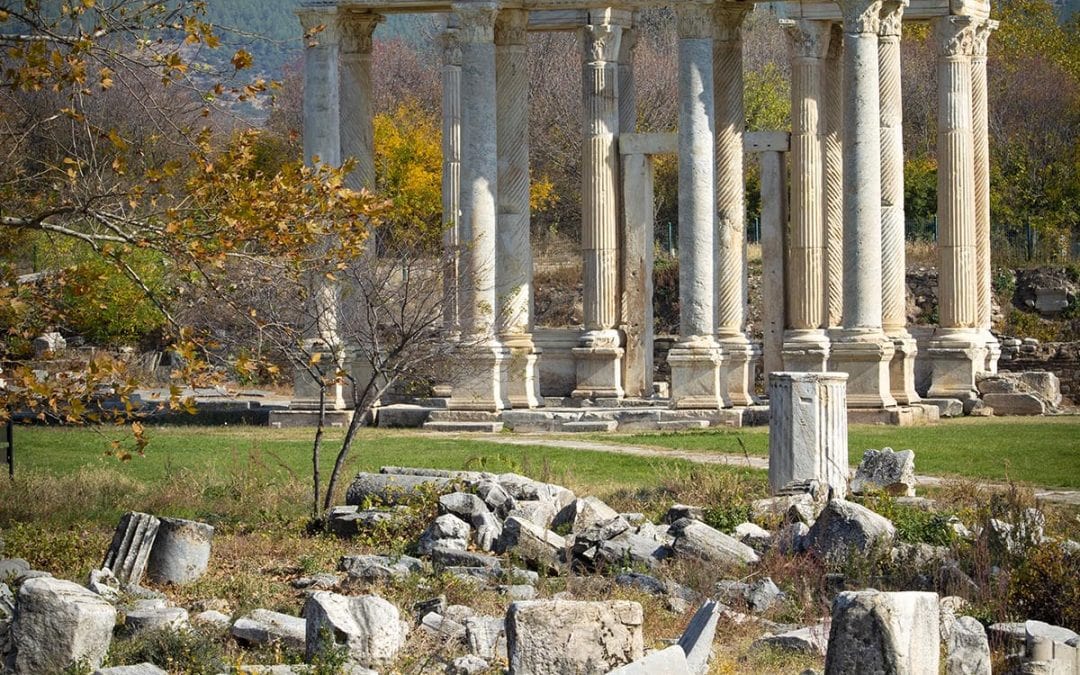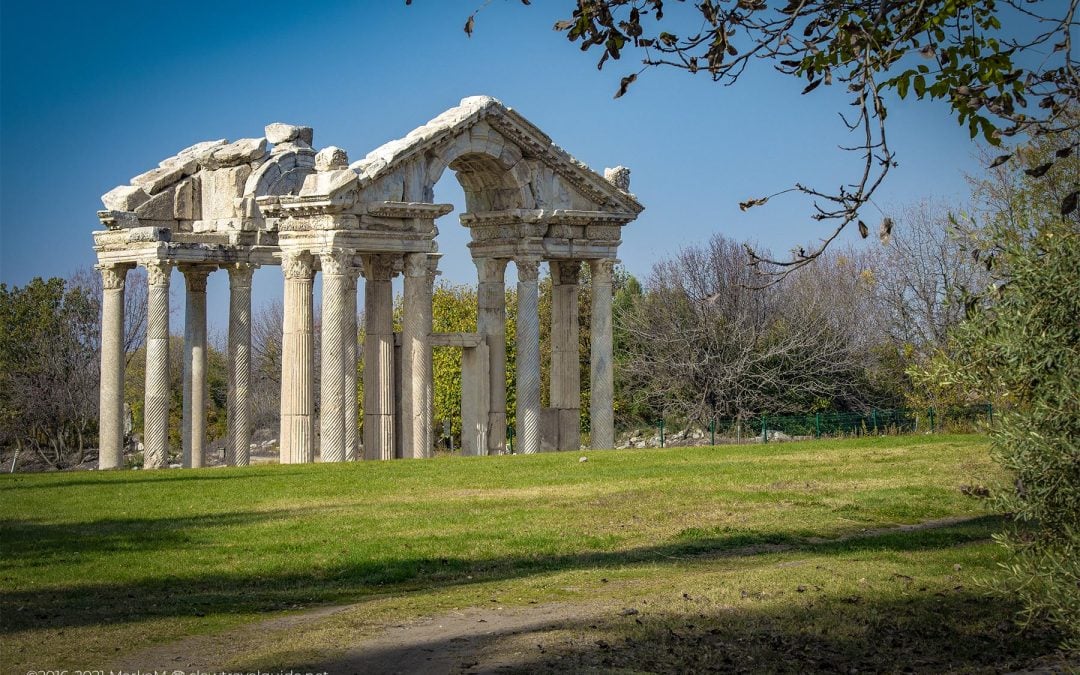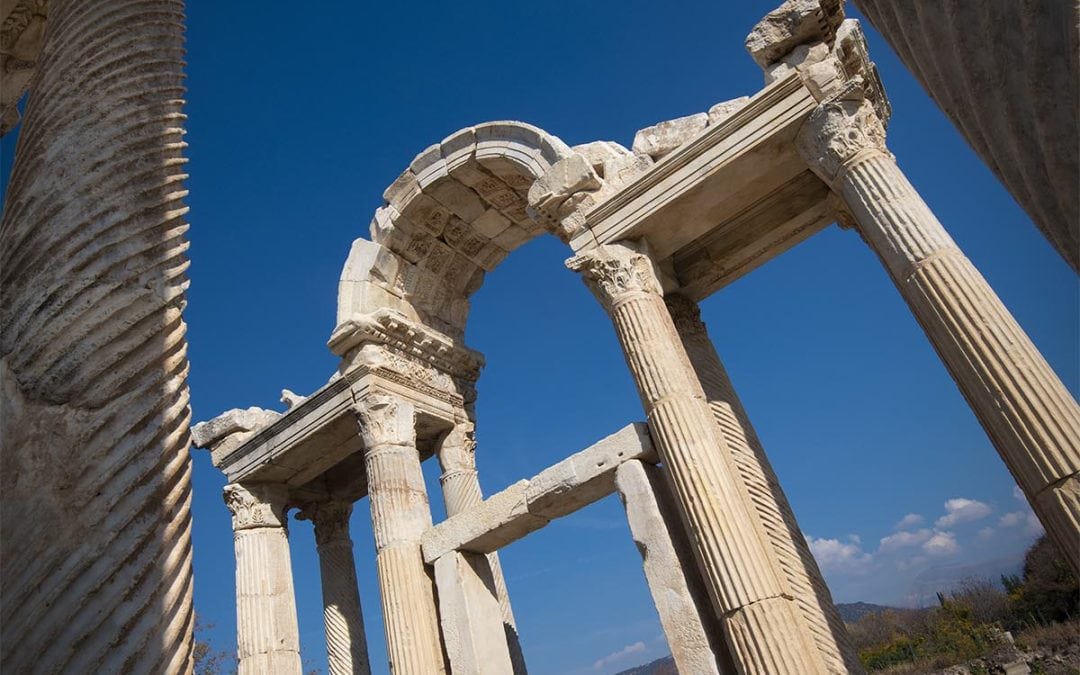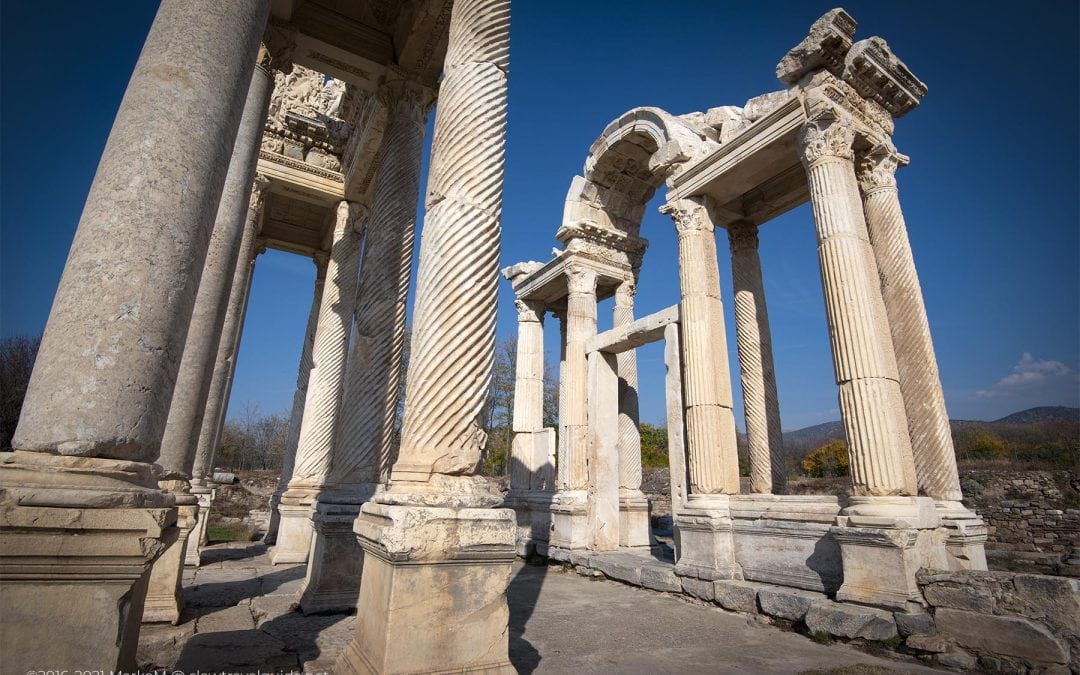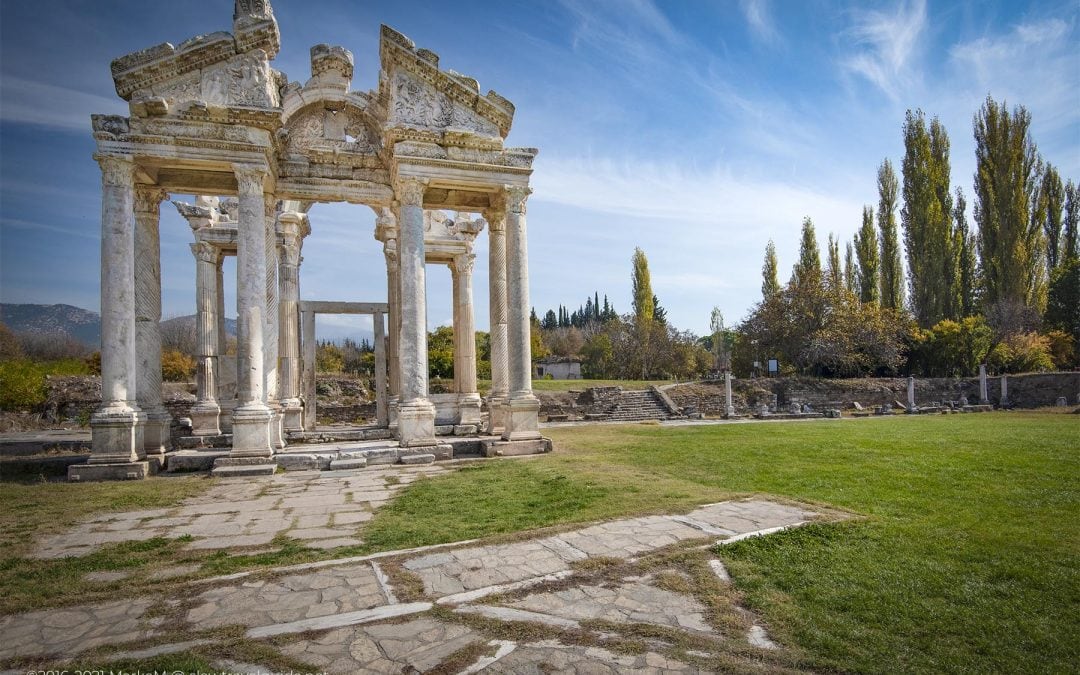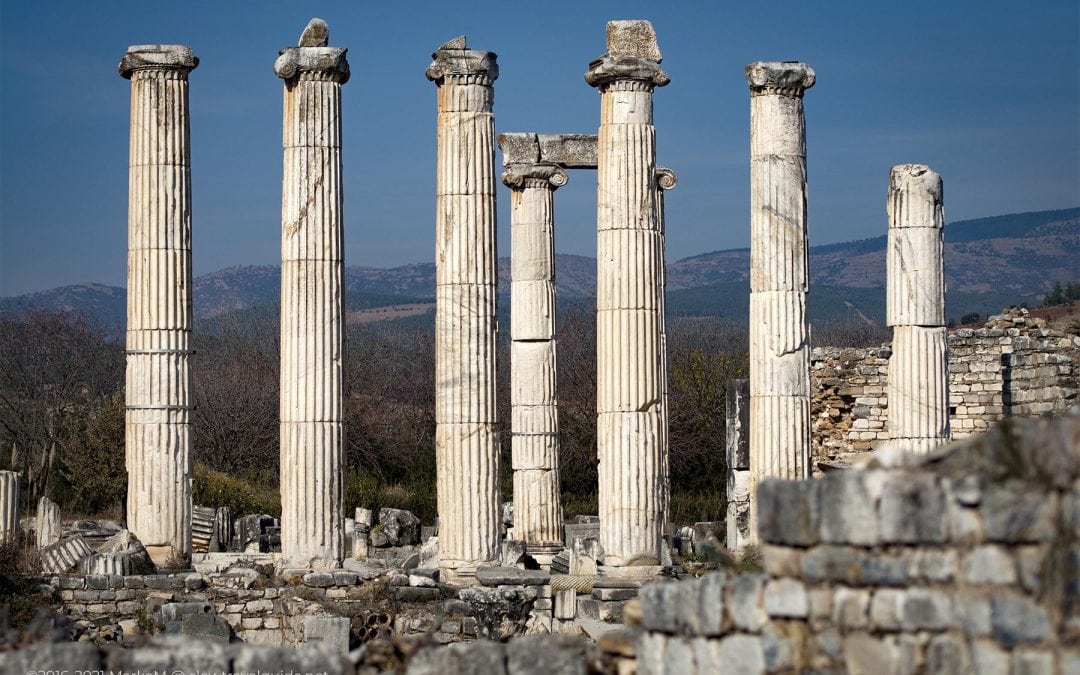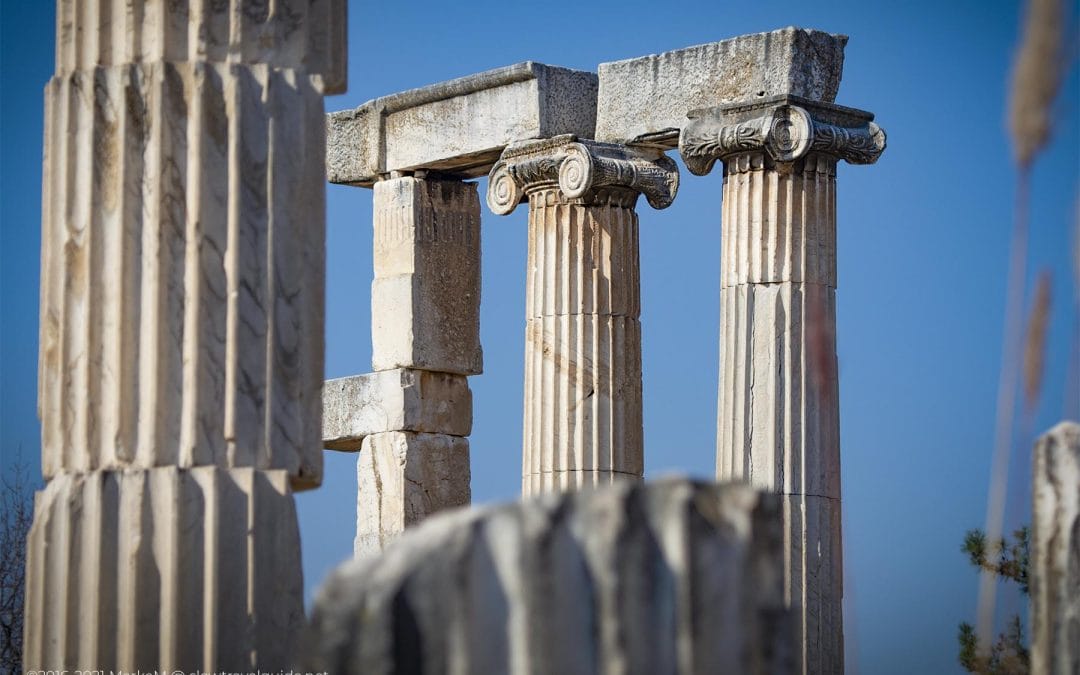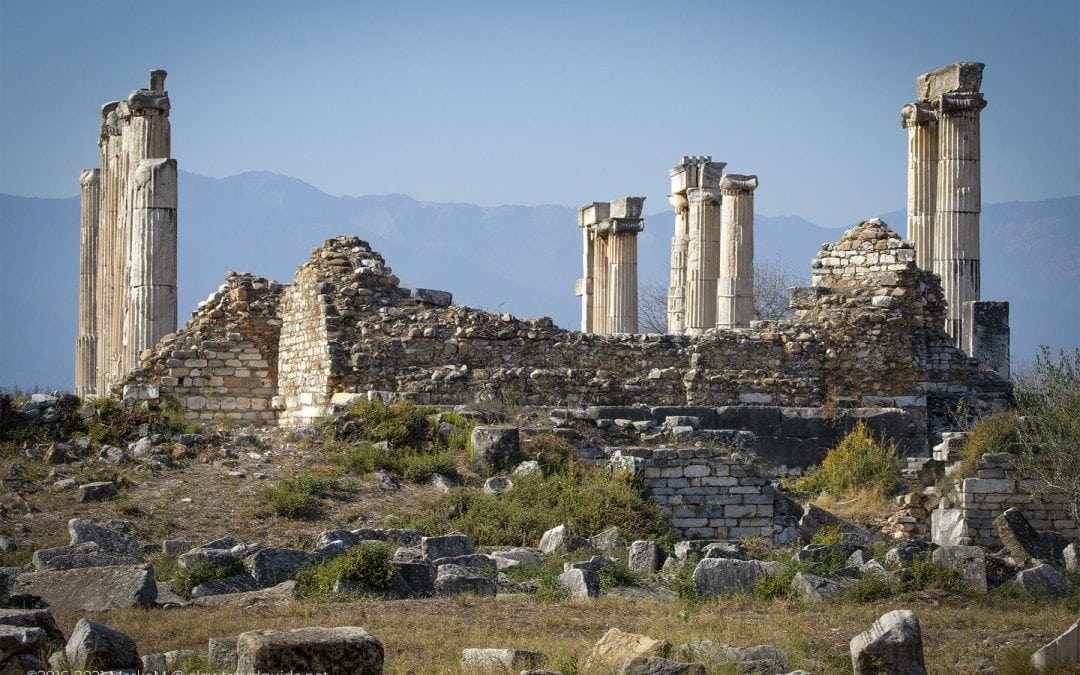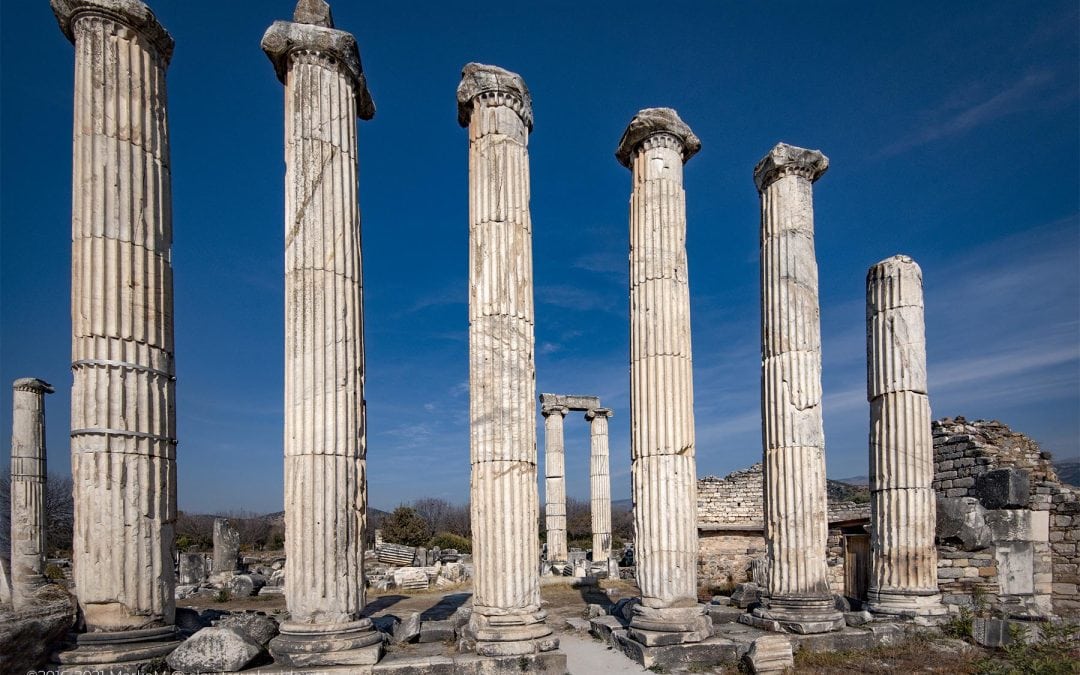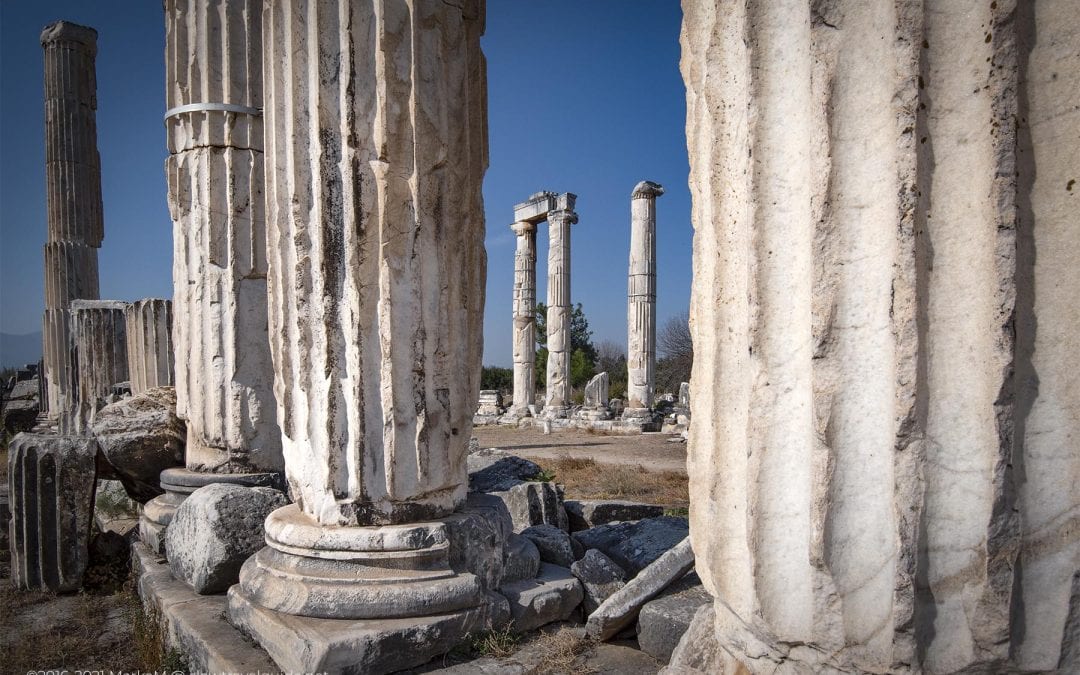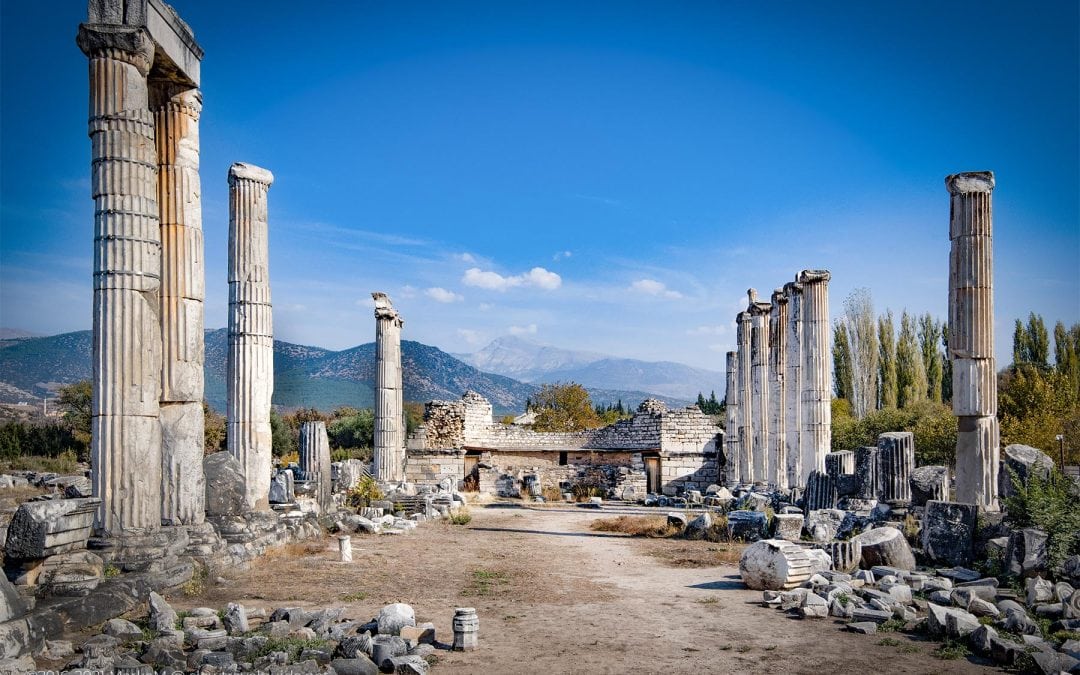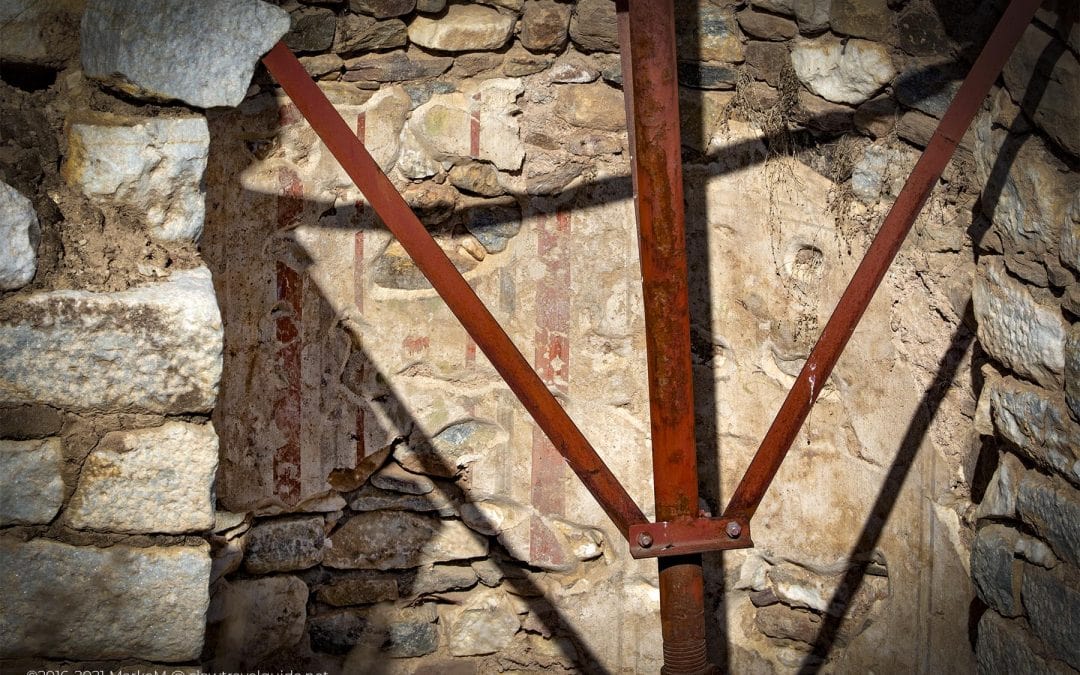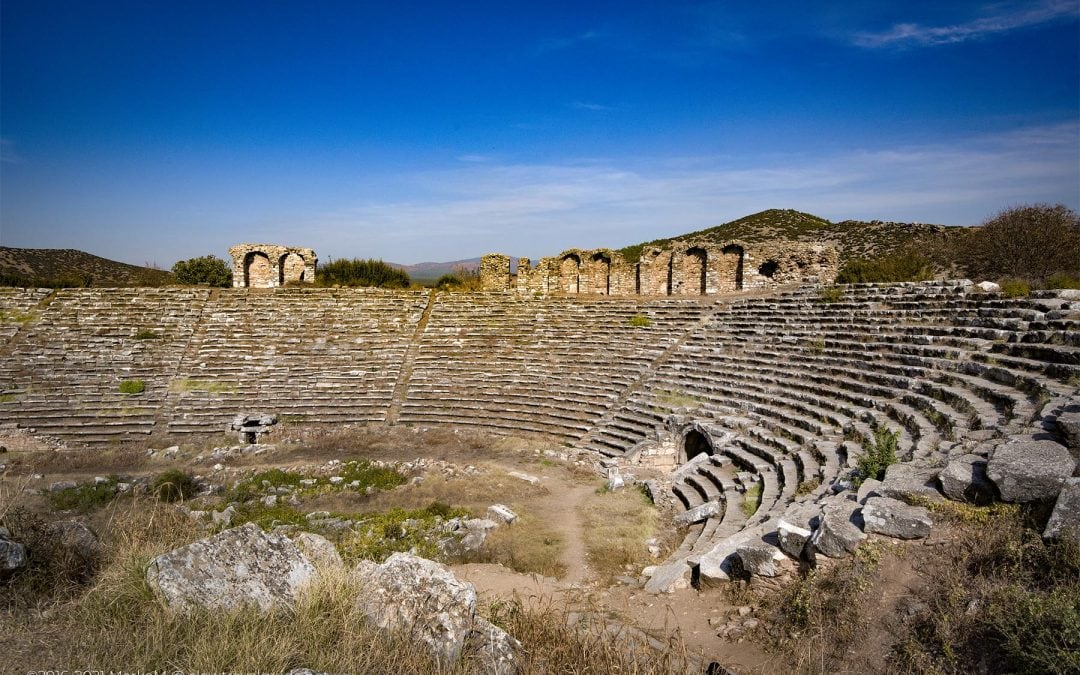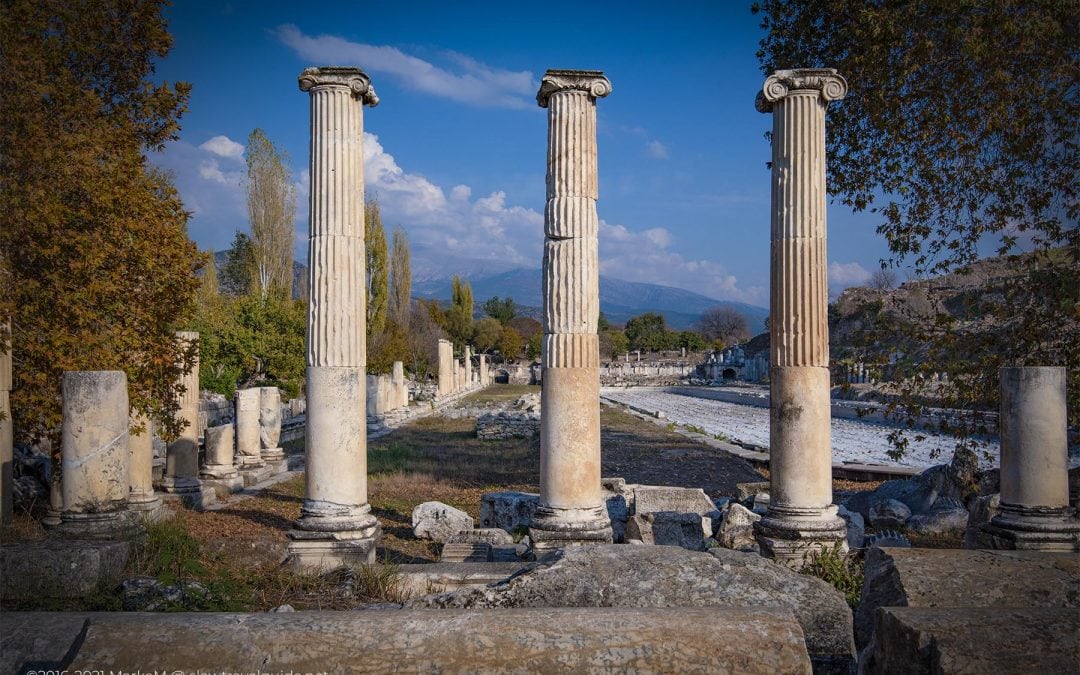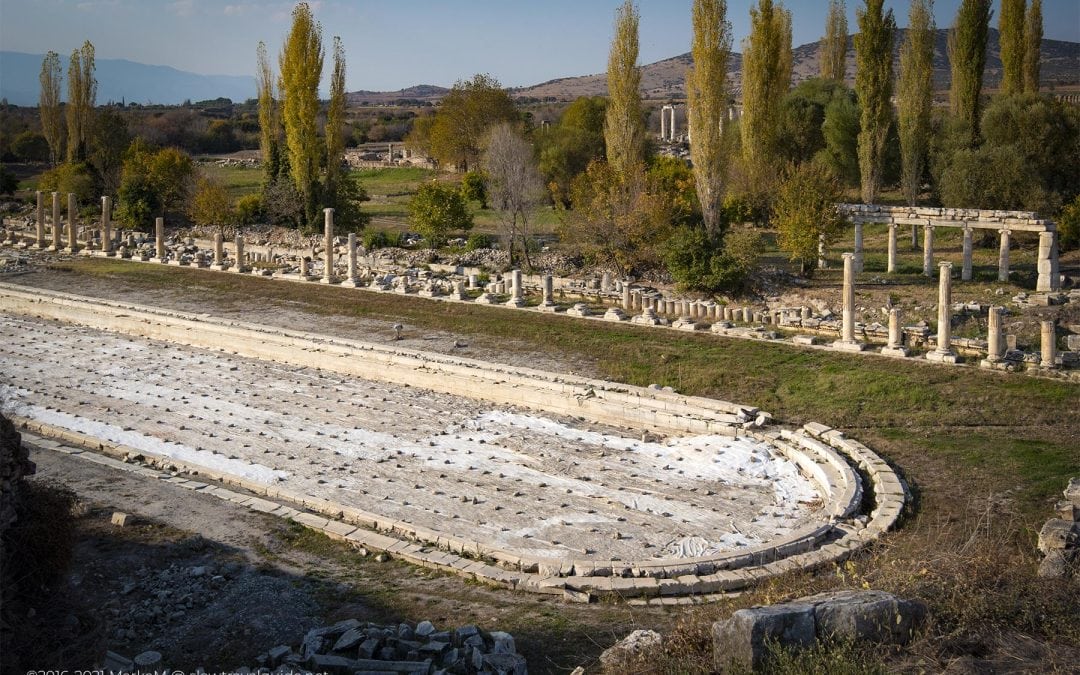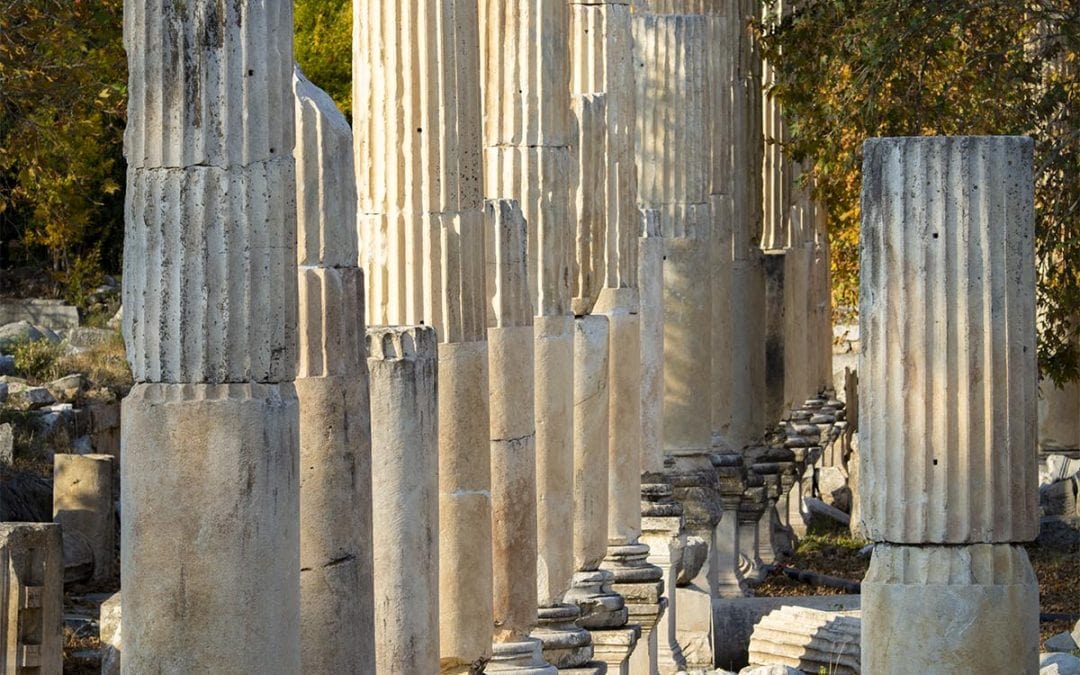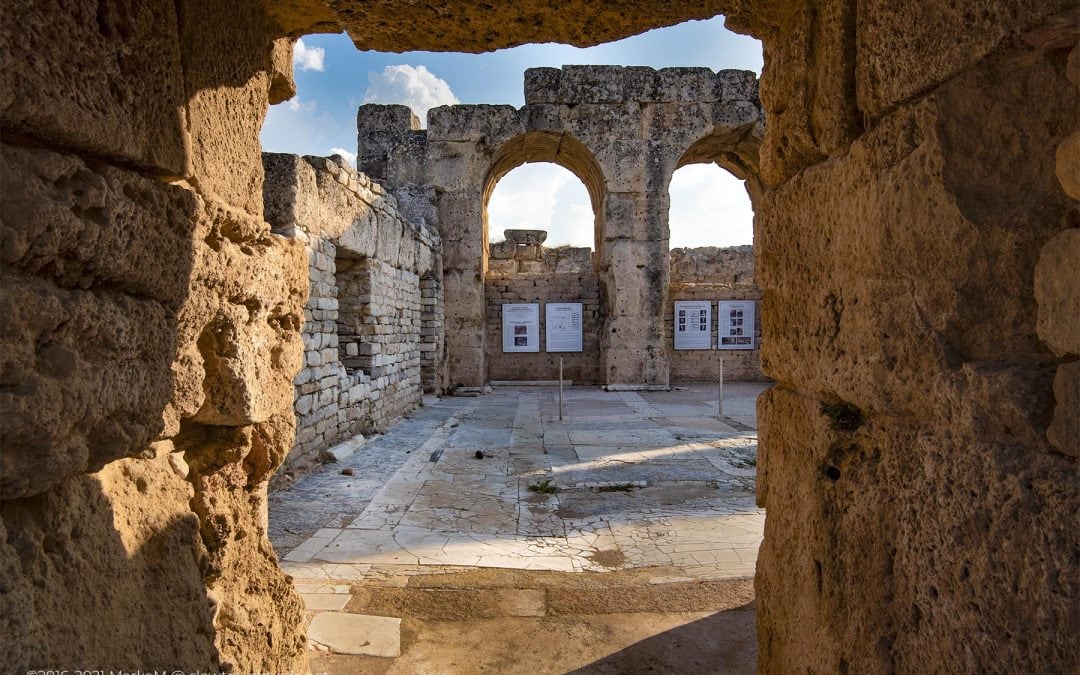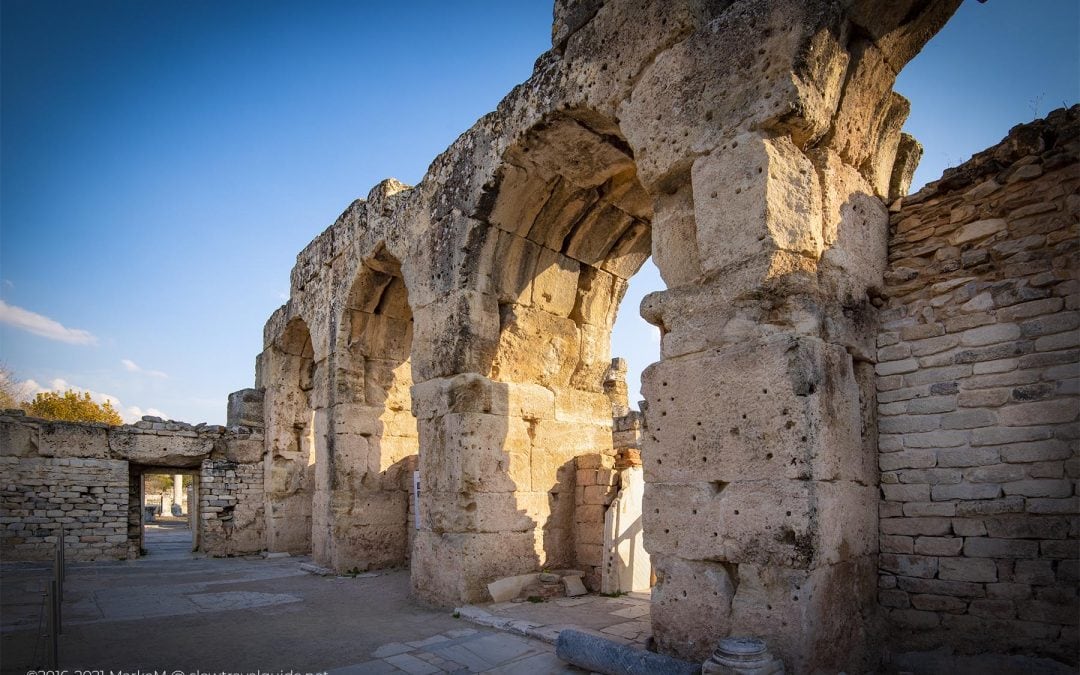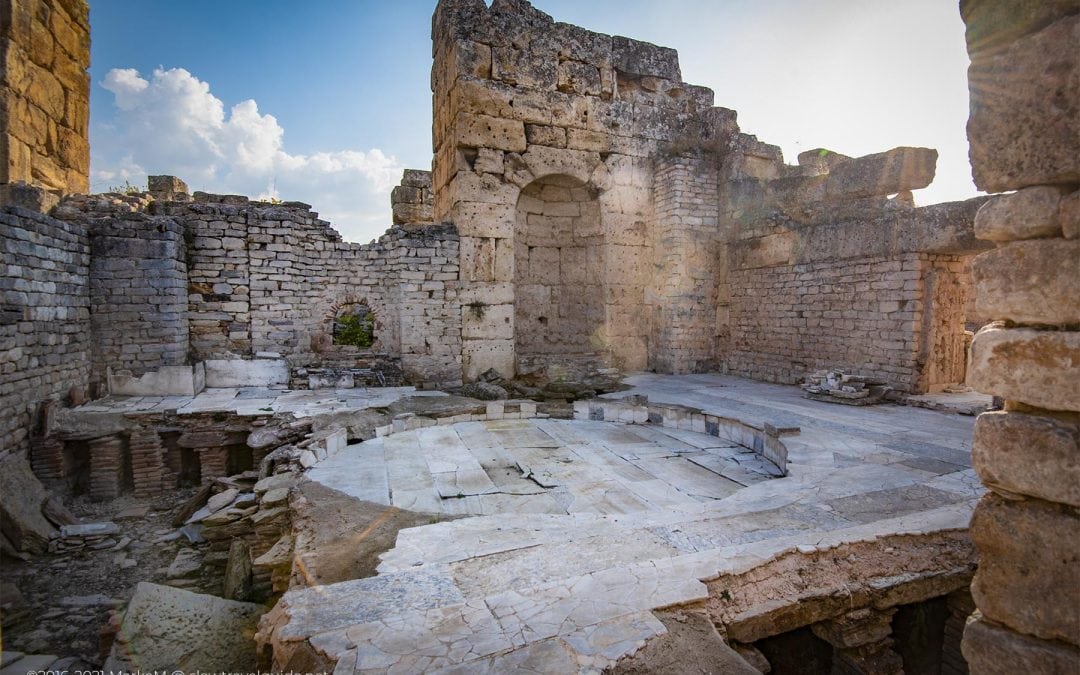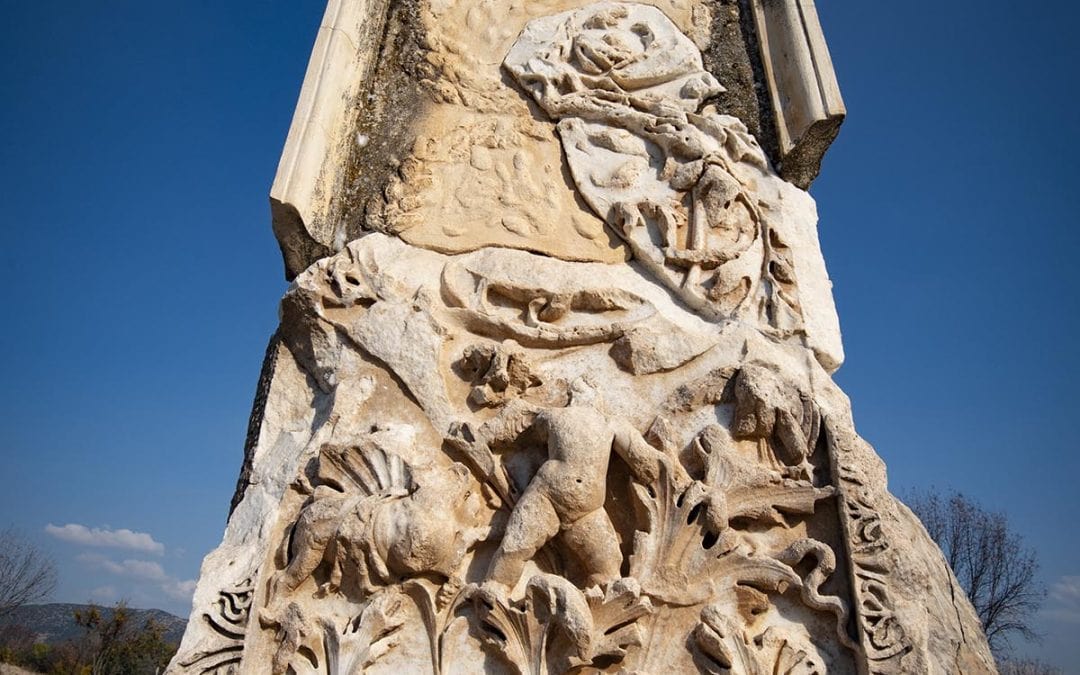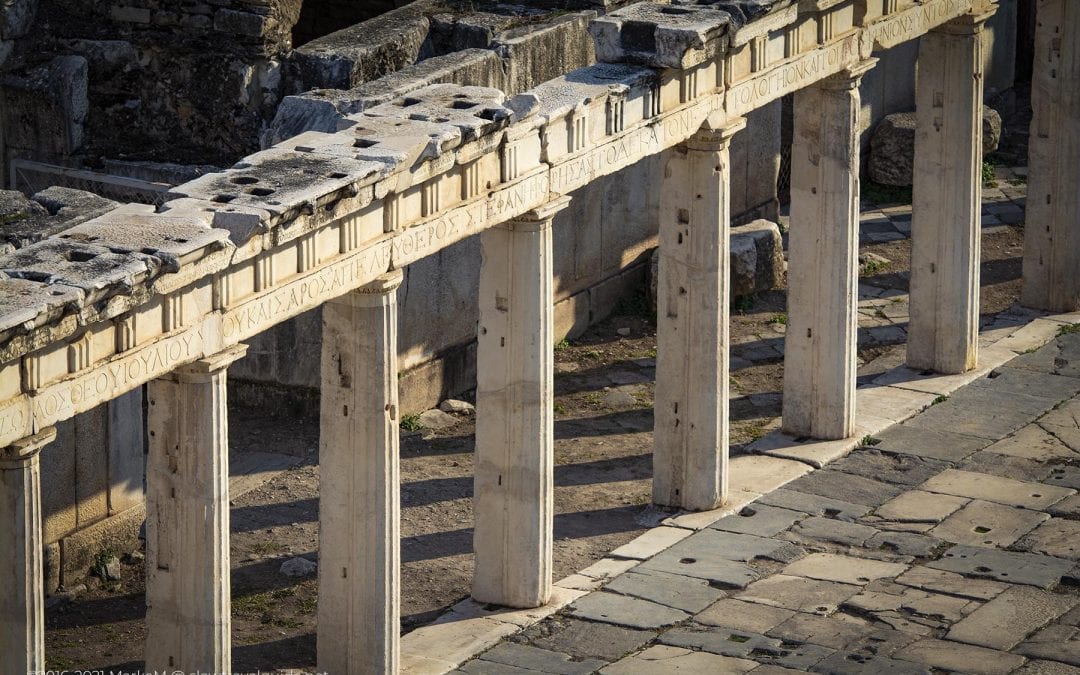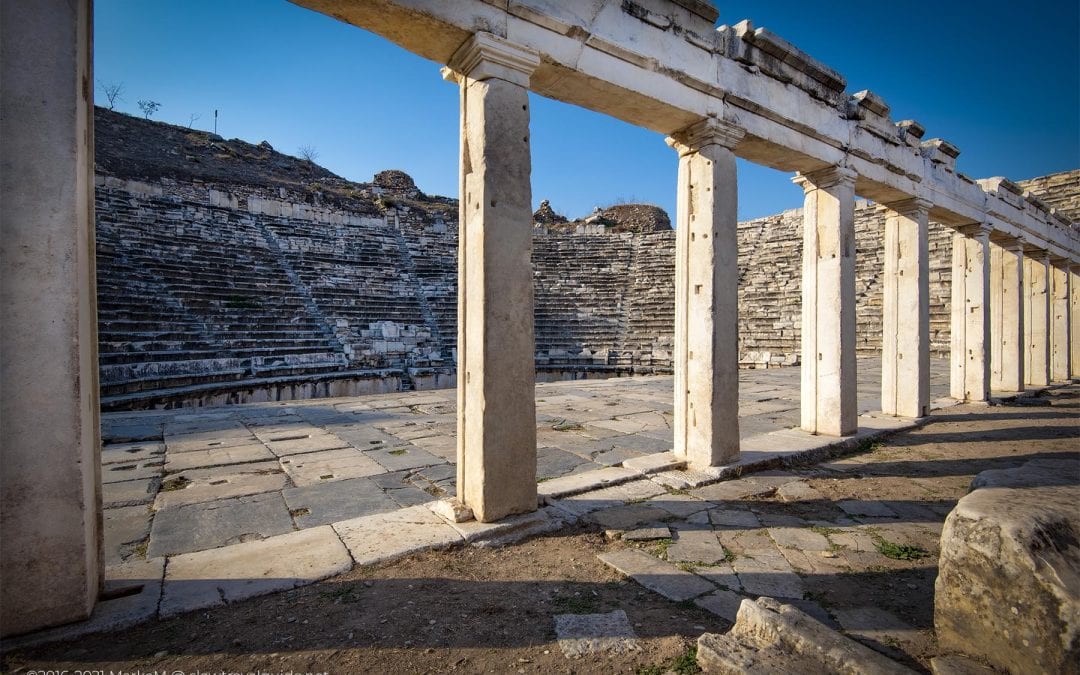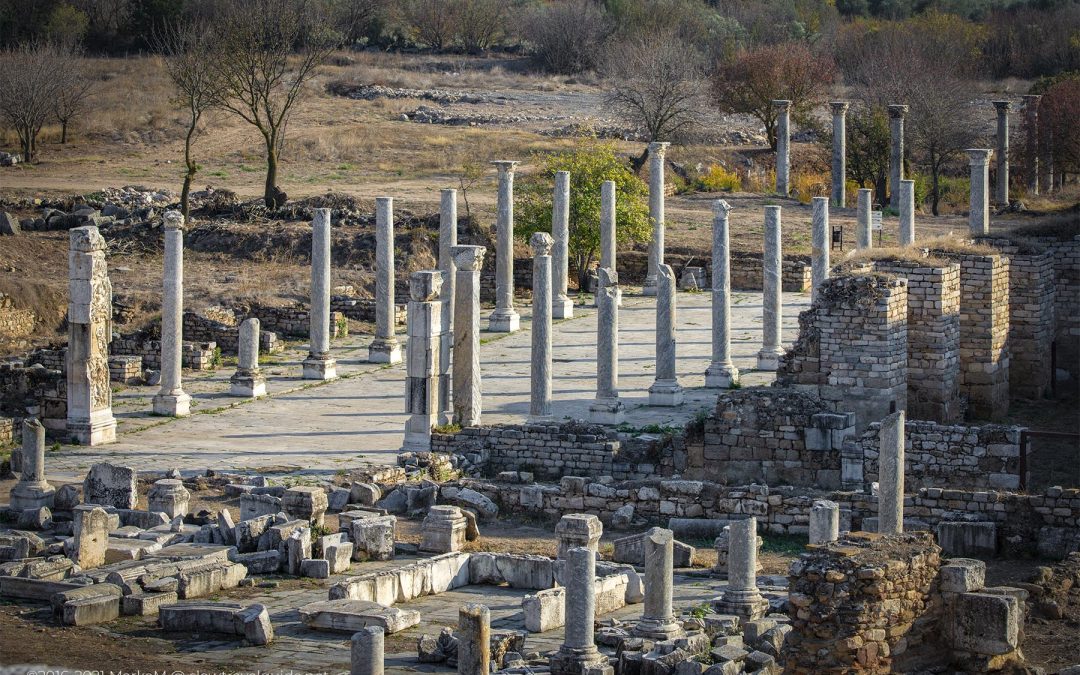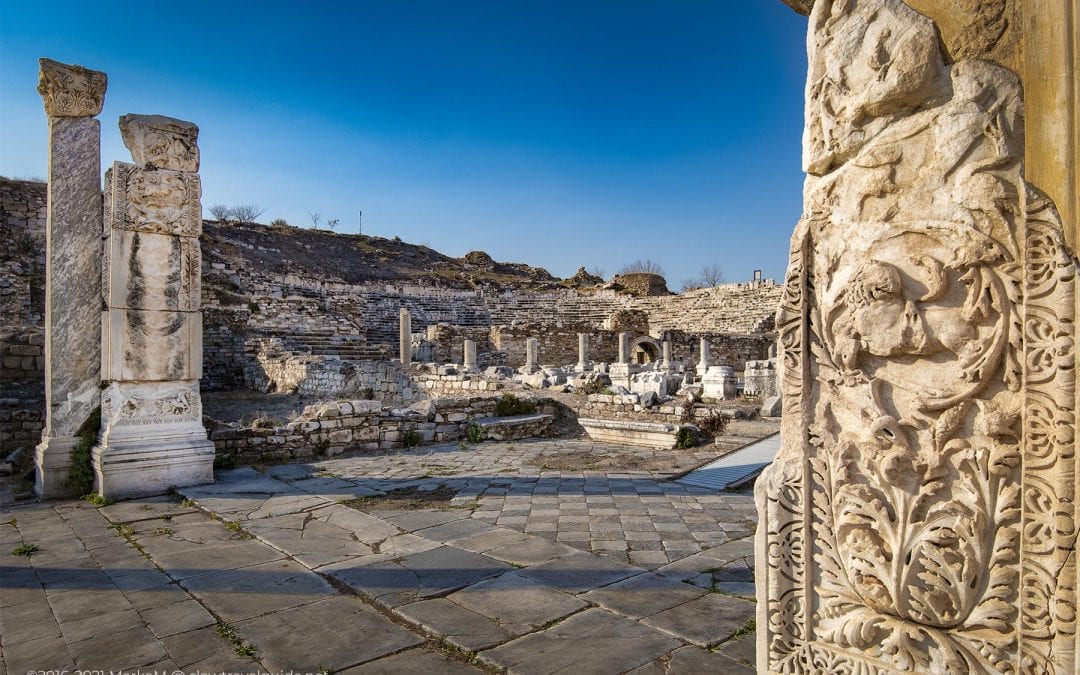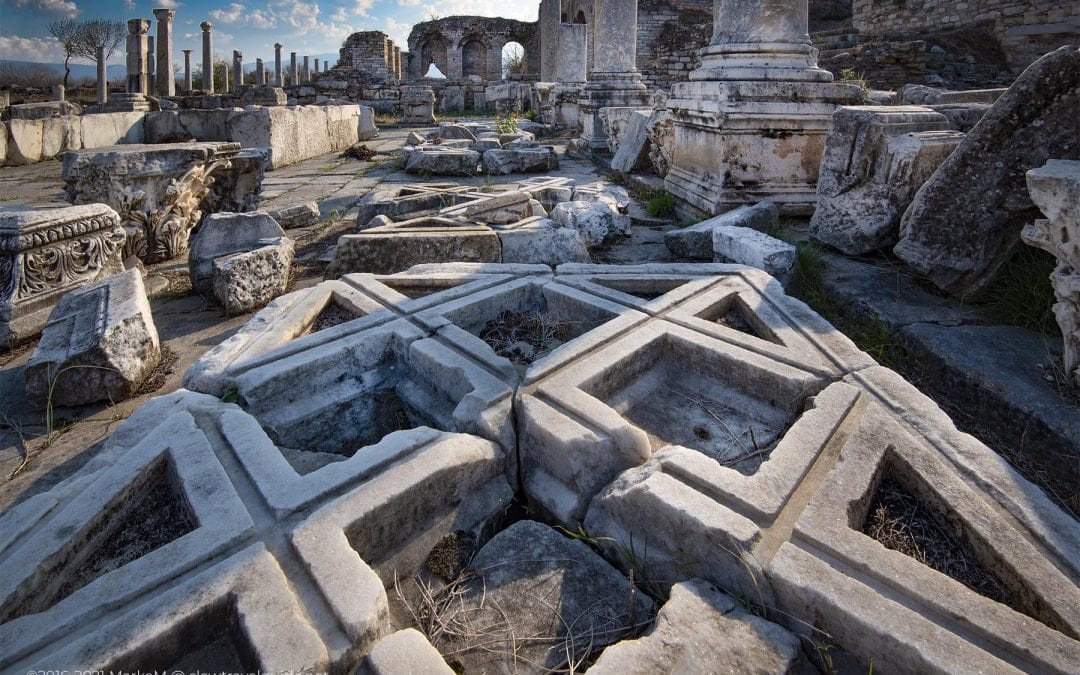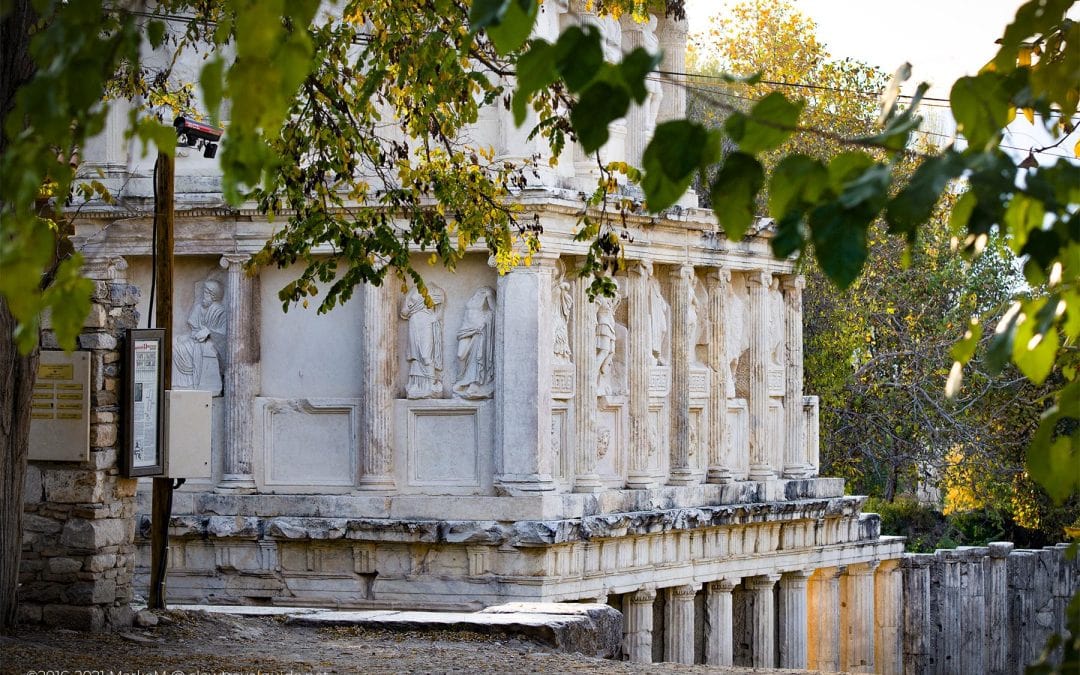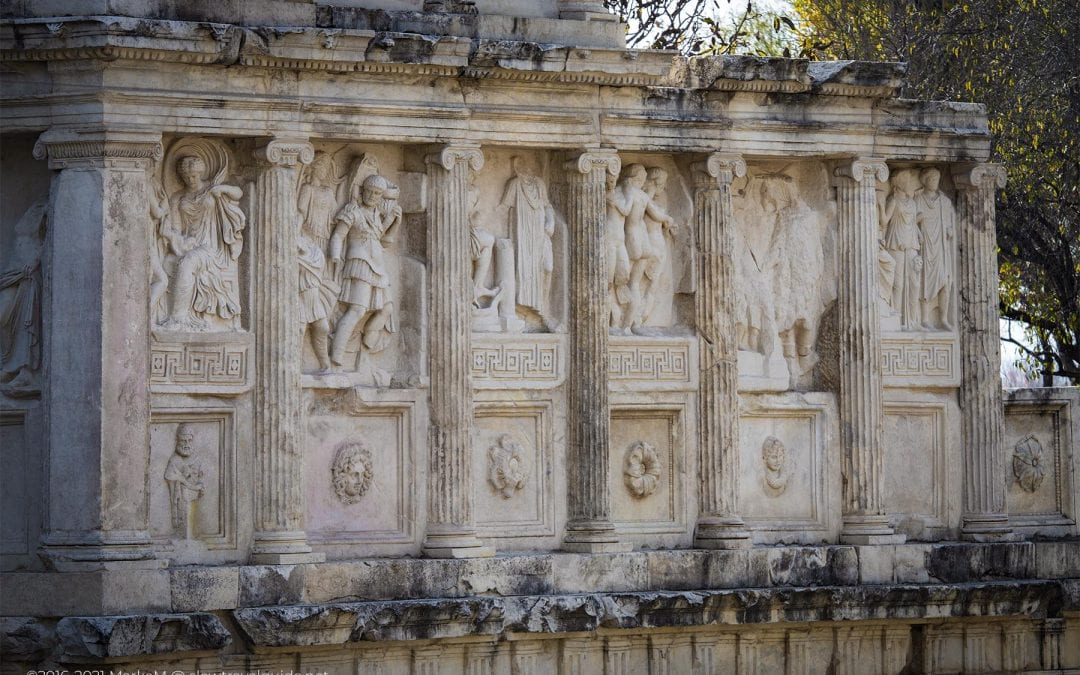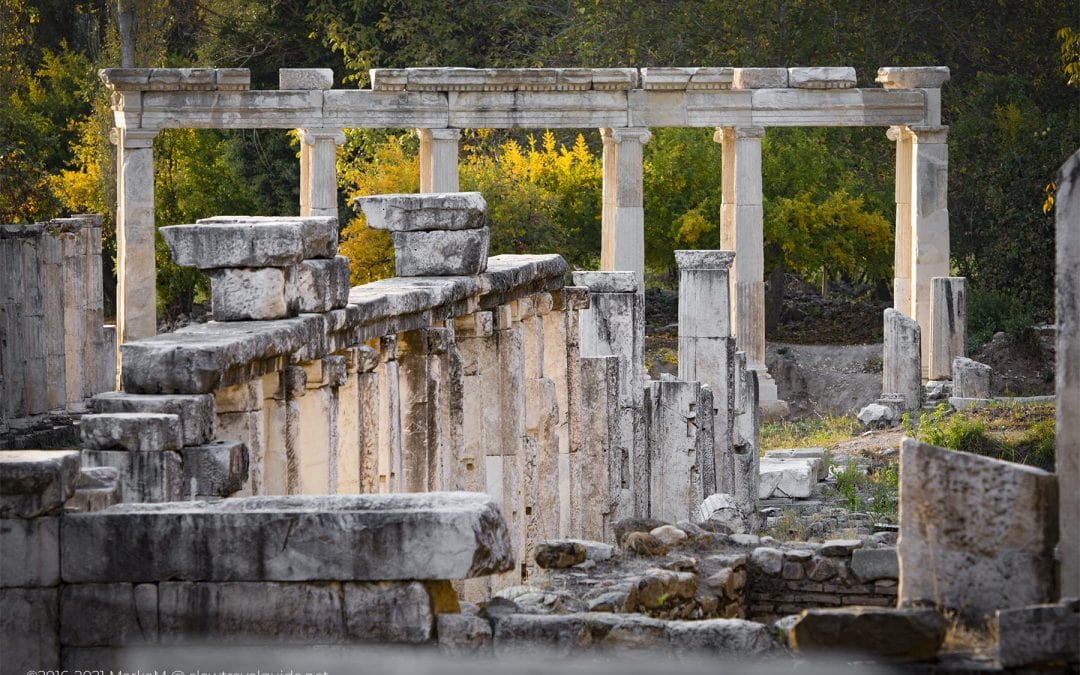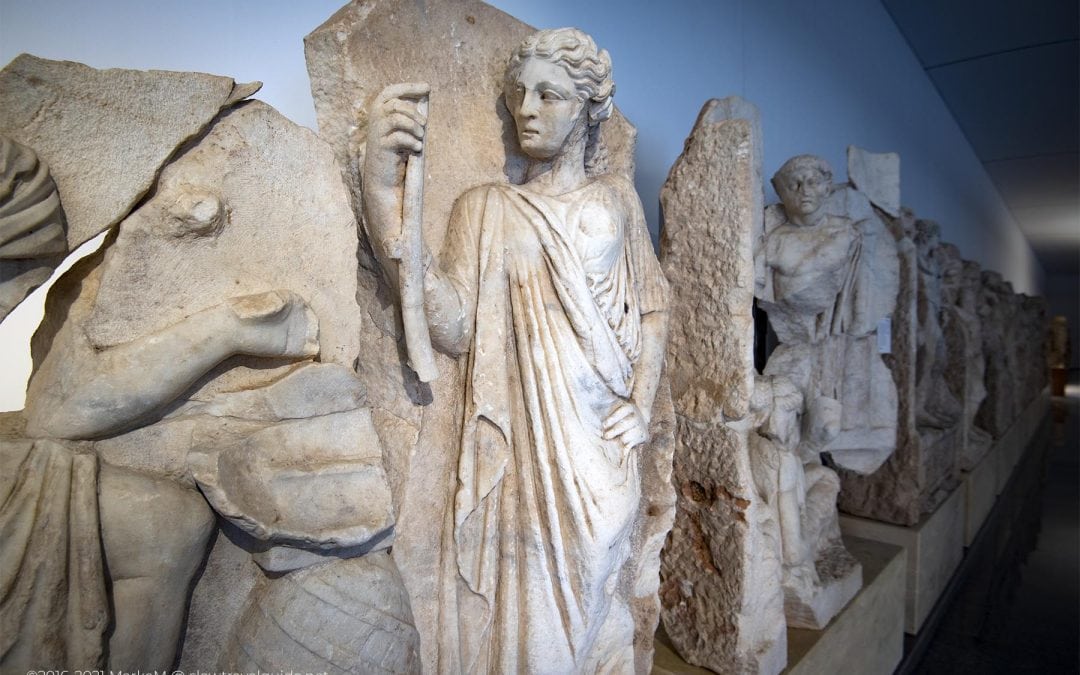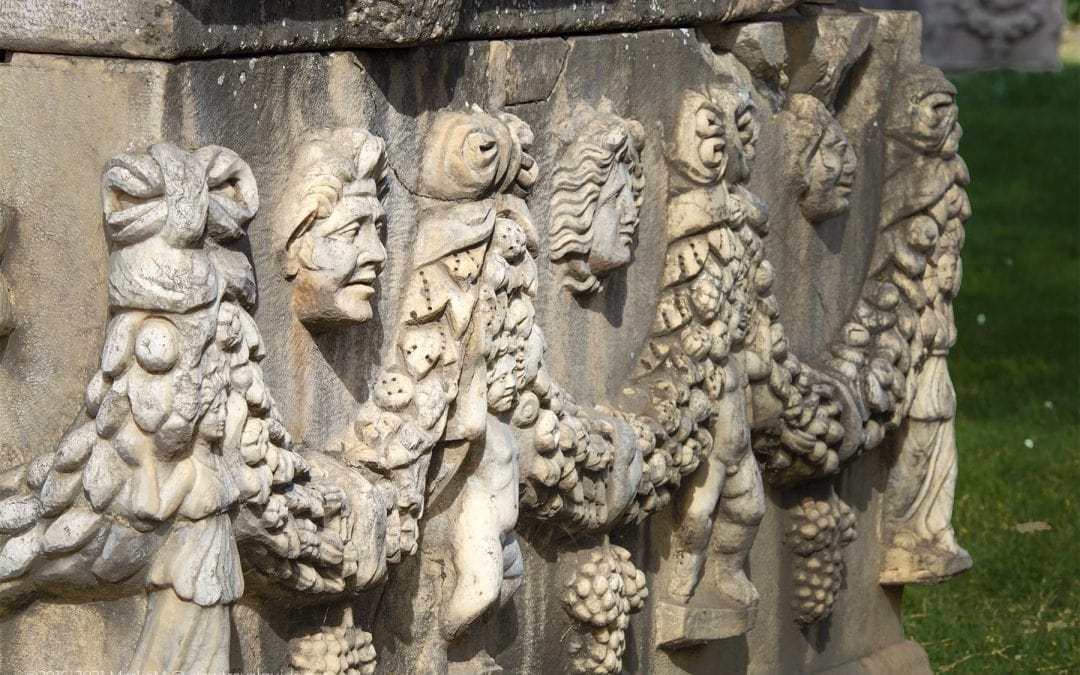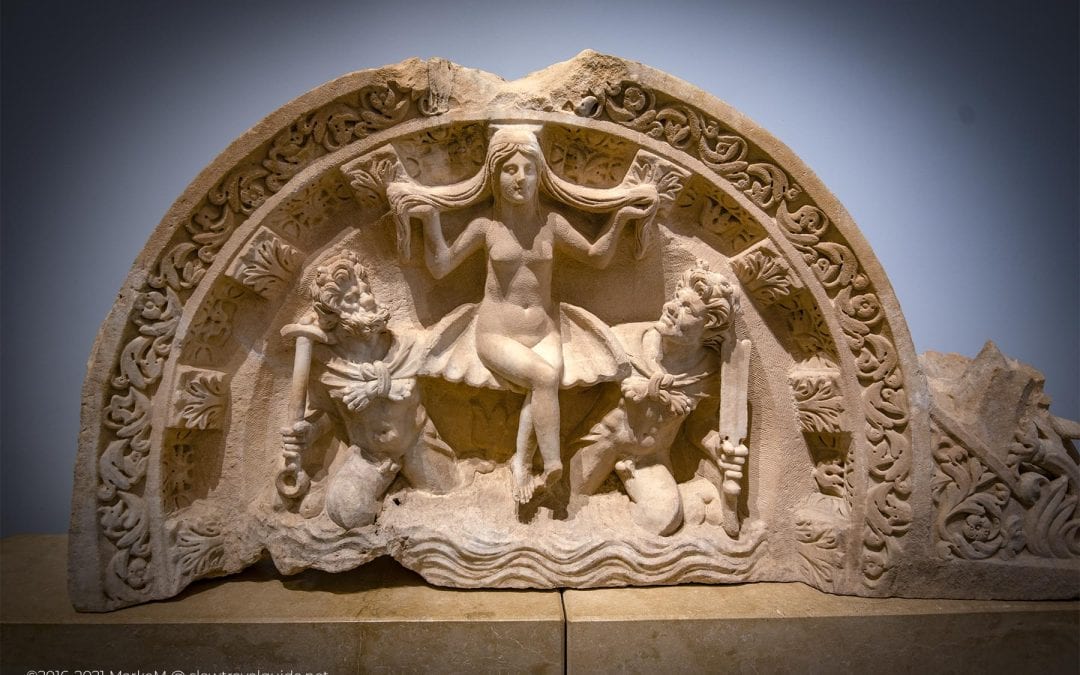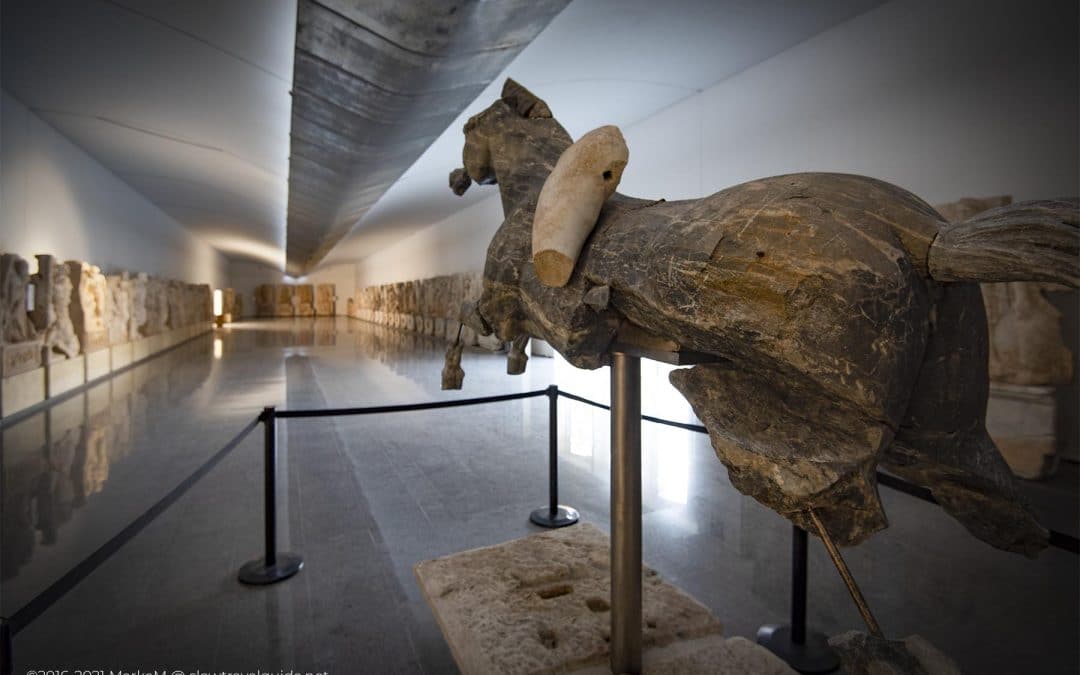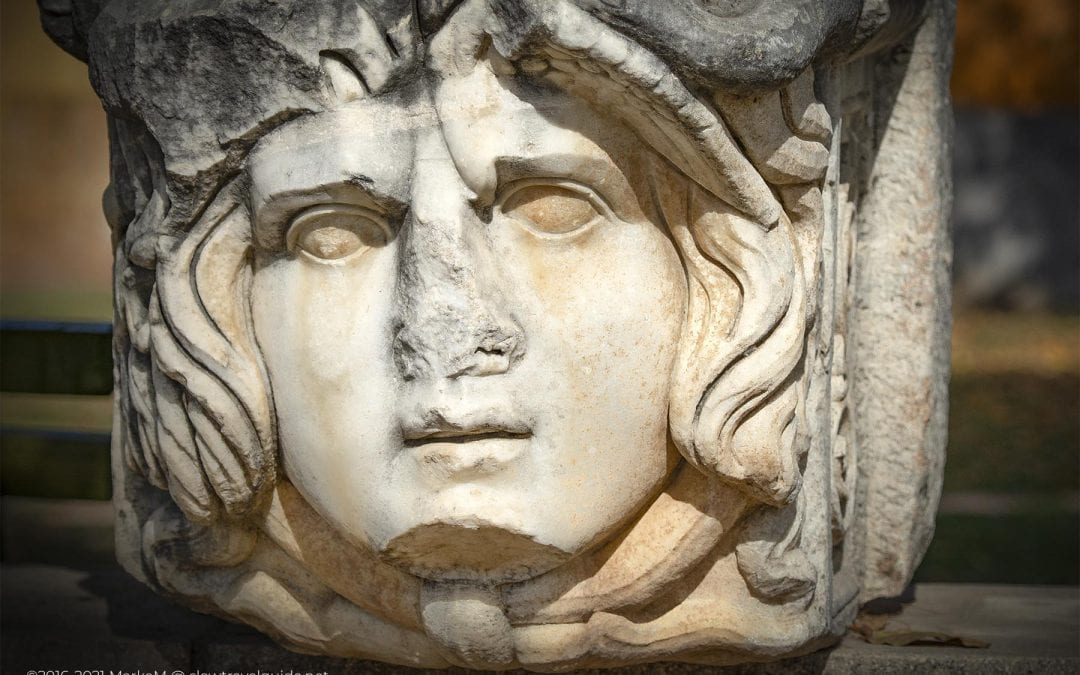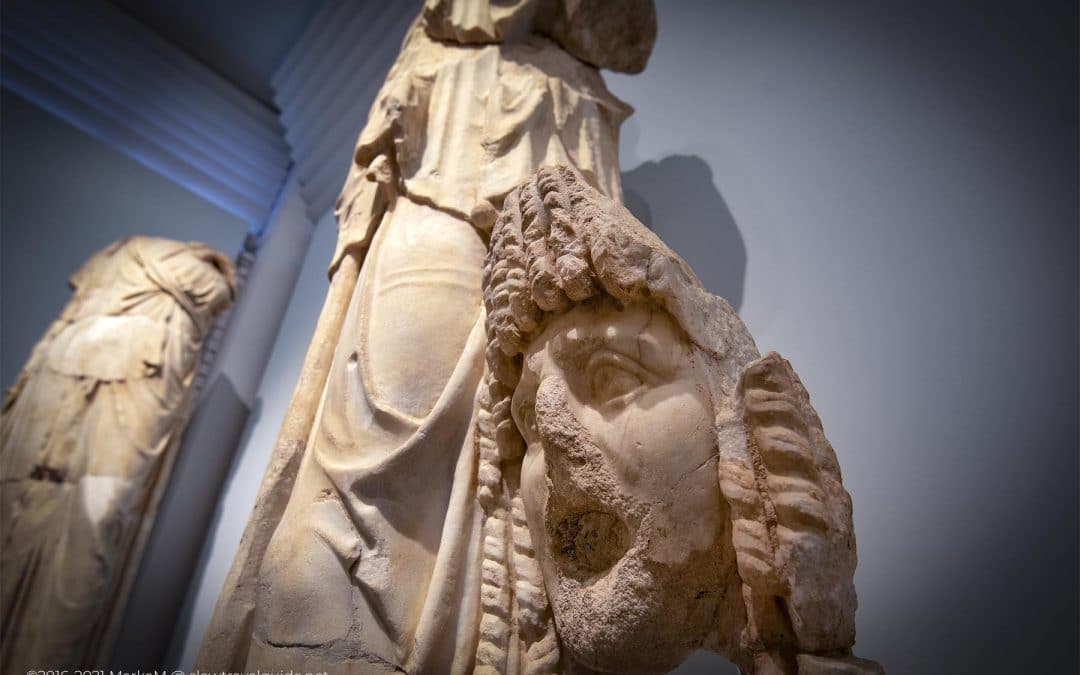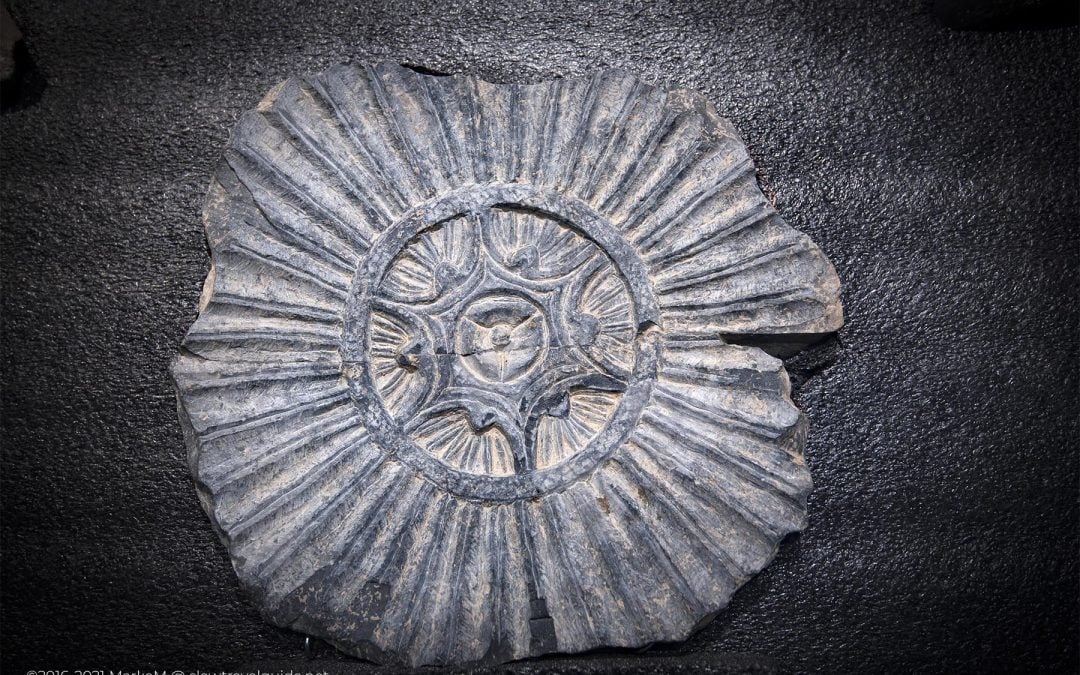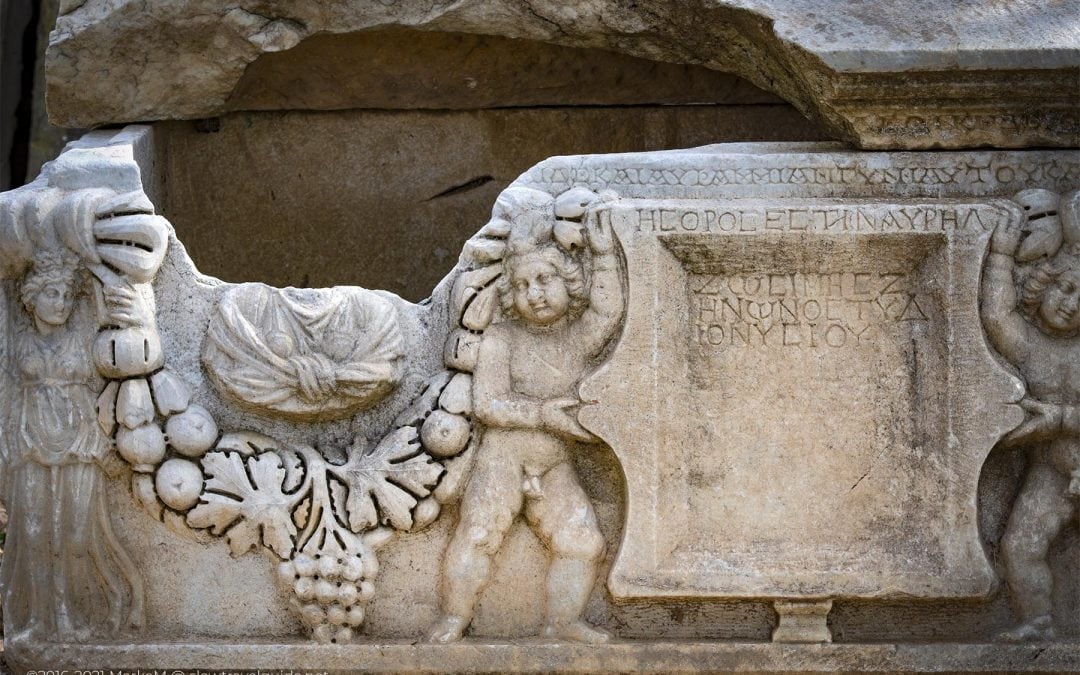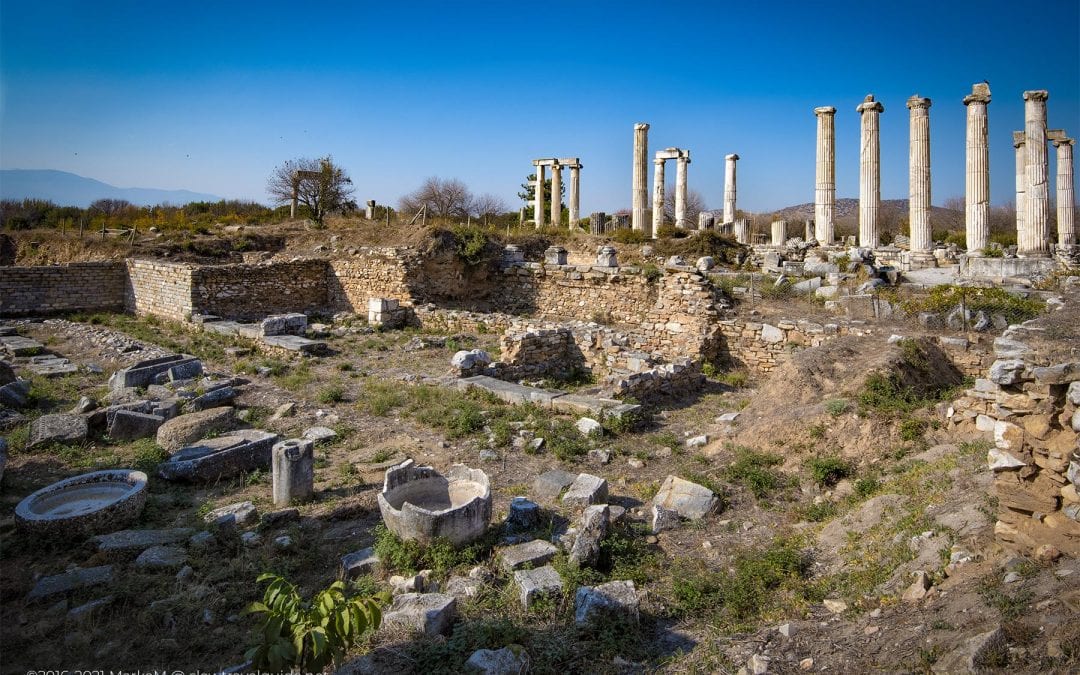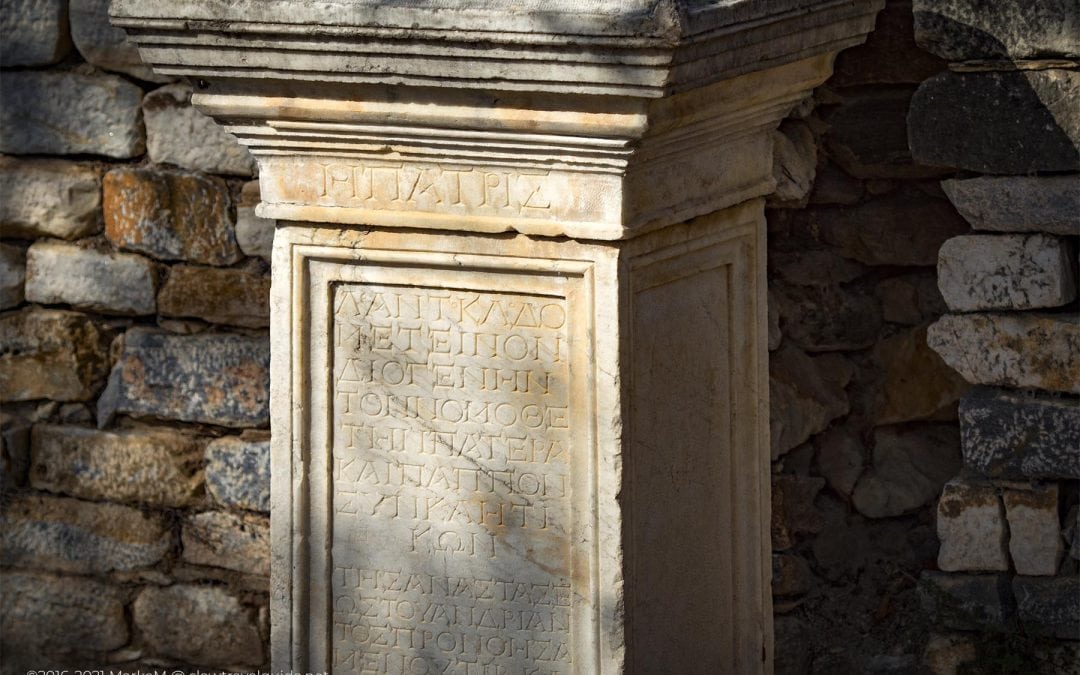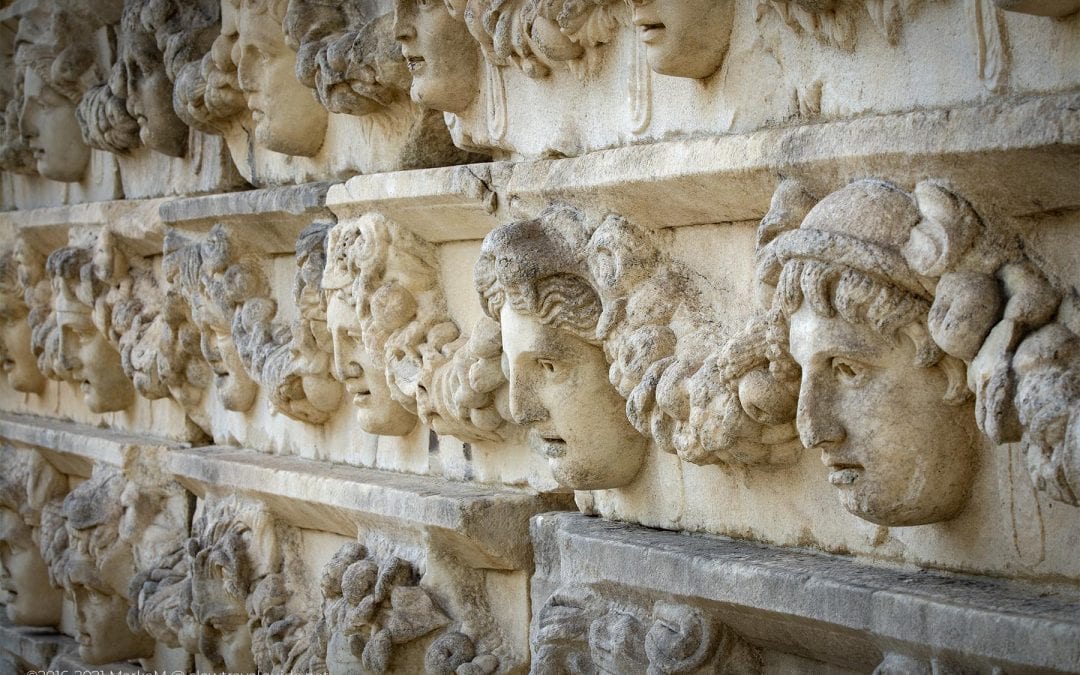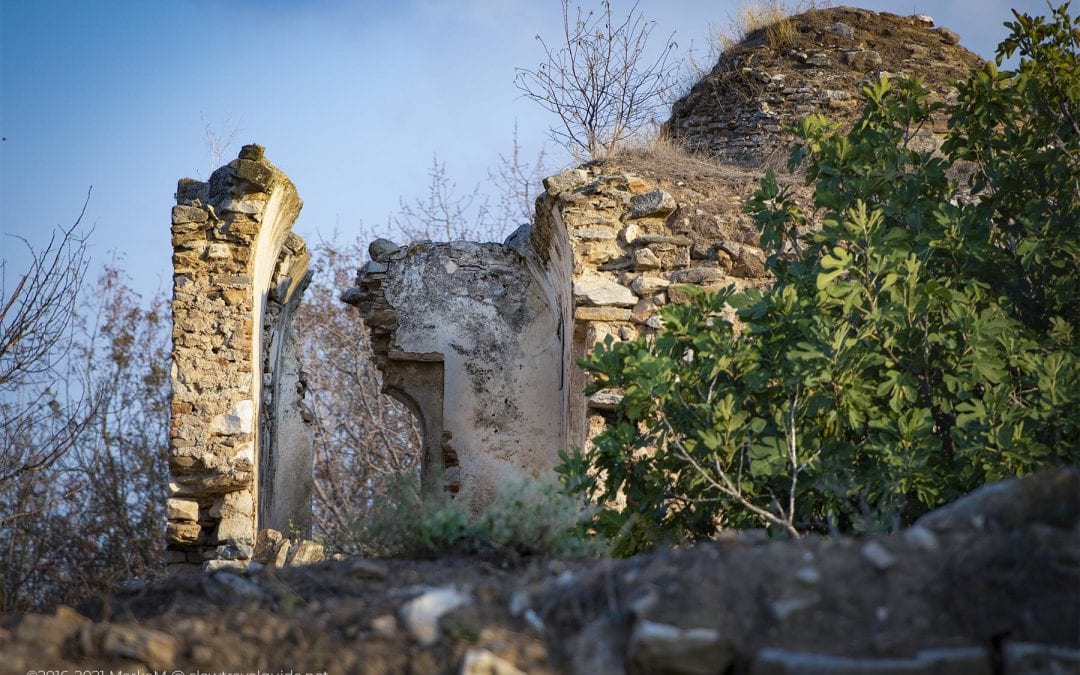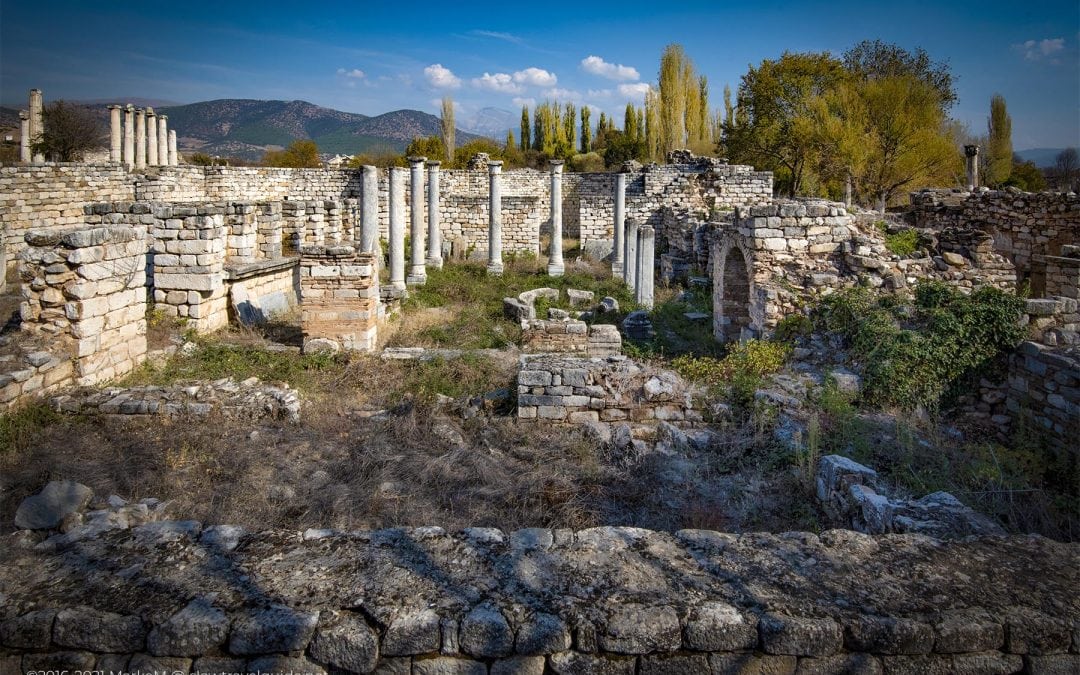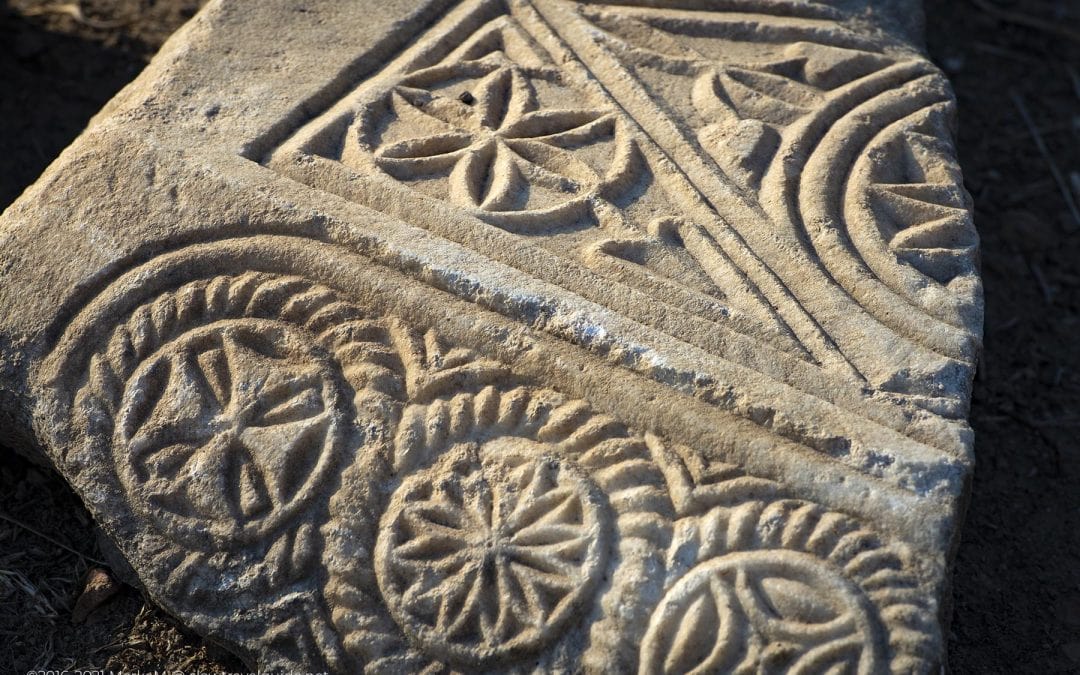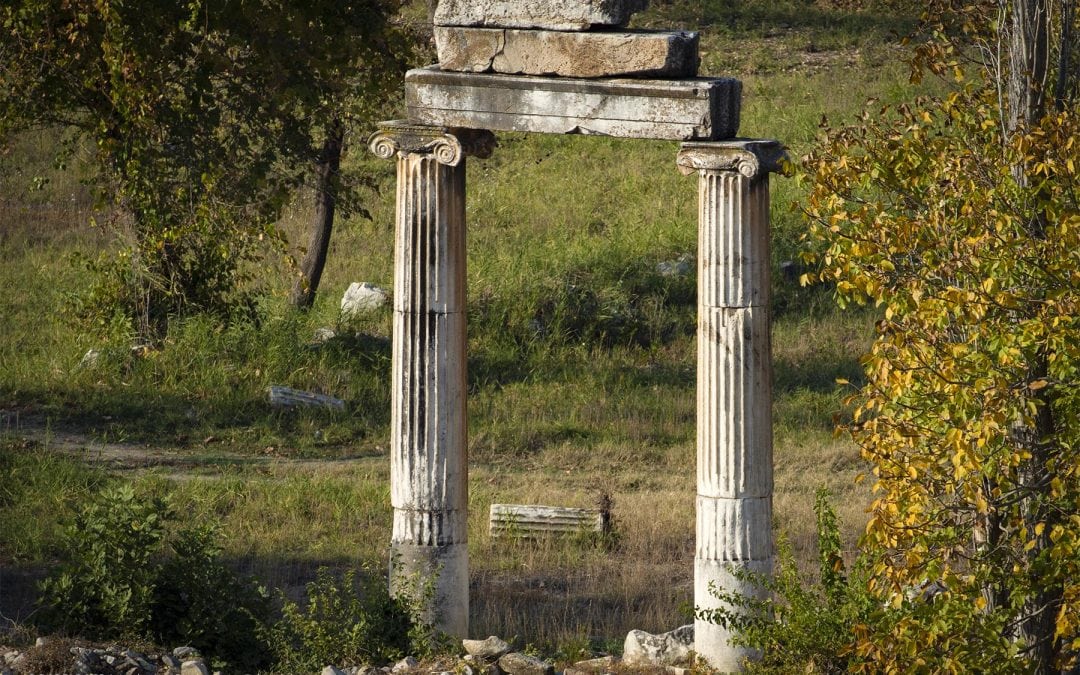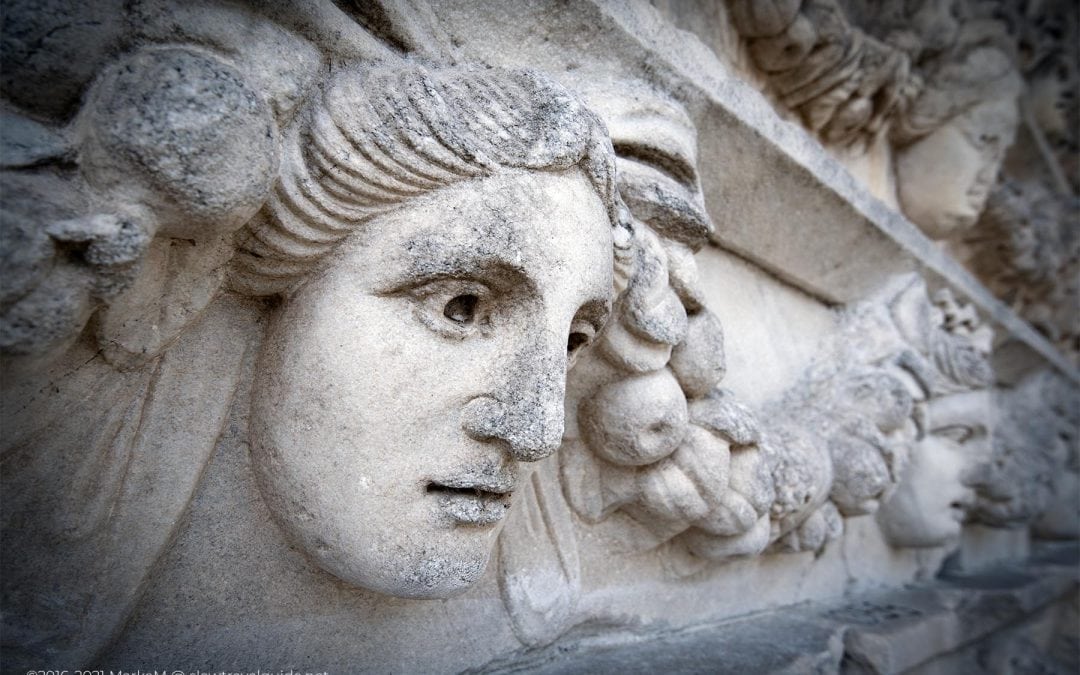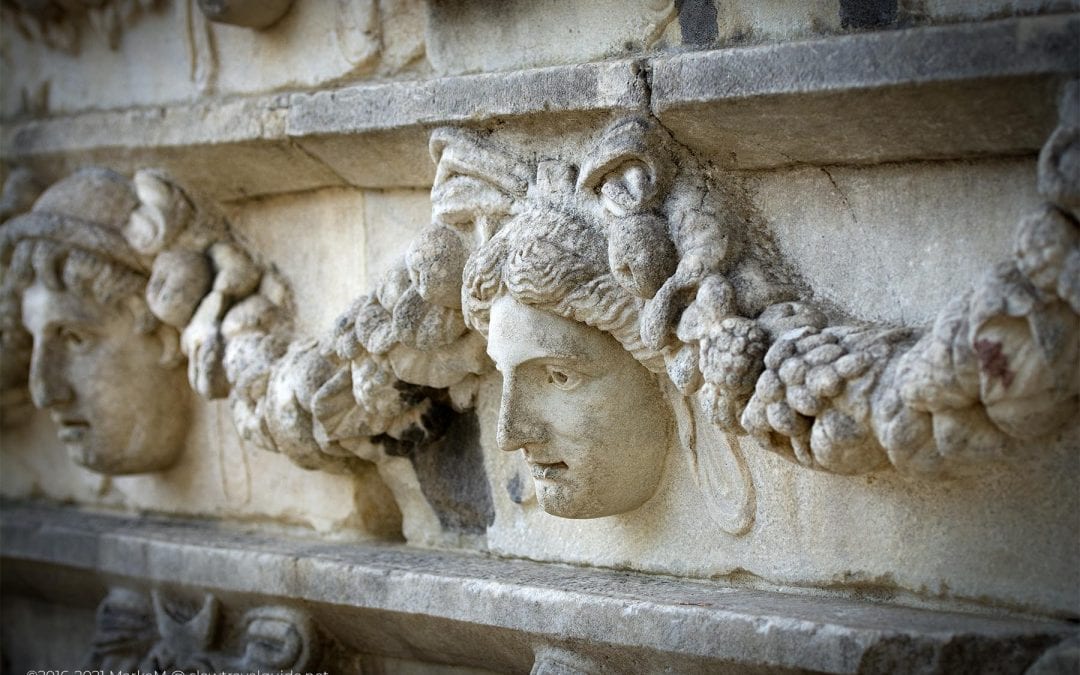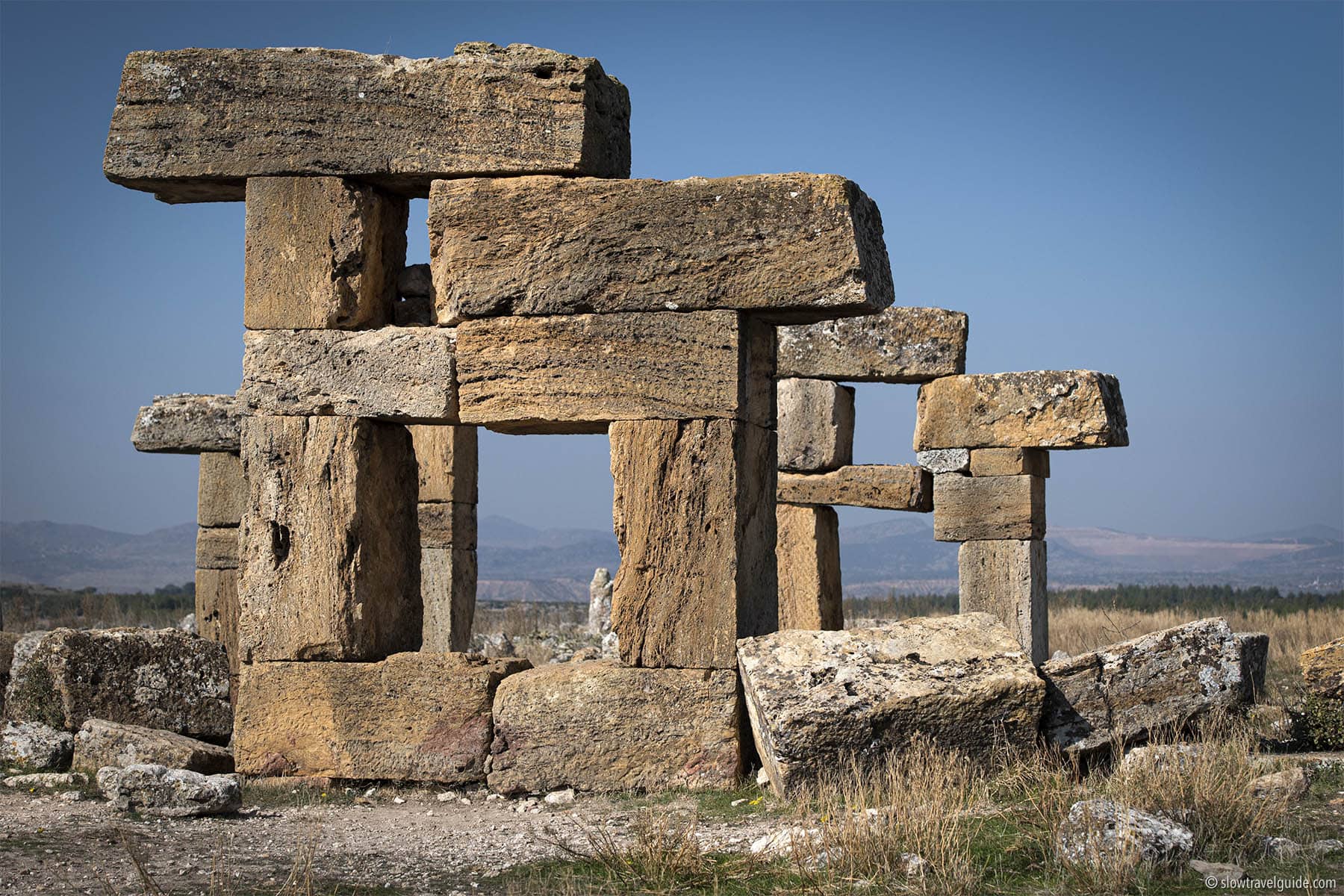Aphrodisias
Aphrodisias is named after Aphrodite
with Slowtravelguide
Aphrodisias is truly unique for many reasons. Tourists do not yet overrun Aphrodisias.
Although the number of visitors is growing, with almost 50,000 people visiting in 2019, it is still possible to walk around the site in relative tranquillity. You might run into a group from time to time.
Aphrodisias had a well-known school of sculpture. You can admire the fabulous work of the artists on the site.
Aphrodisias is one of the best-preserved ancient cities in Anatolia. While it may be world-famous for its Tetrapylon, there is much more to discover.
The Aphrodisias stadium is 262 m long. It is relatively intact and quite spectacular.
Tetrapylon Seen From The Back Of Aphrodite’s Temple At Aphrodisias In Turkey
History Of Aphrodisias
It would take too long us too to tell the history of Aphrodisias in full. There are other sources you can find which give you this information. Aphrodisias was not always the name of the site. The history of Aphrodisias goes back to the late Neolithic period. Other names for Aphrodisias were Lelegonpolis, Megalopolis, Ninyo, Kaya and Gear, which is still the name of the village where Aphrodisias (a UNESCO site, by the way) is located.
Aphrodisias was named after Aphrodite, the goddess of love.
During the Roman period, about 2 BC, Aphrodisias was named after Aphrodite, and it has gained constant importance. One of the inscriptions on the theatre’s stage wall mentioned the golden statue of Eros presented to Aphrodite by Caesar. During this period, the reputation of the urban sculpture school spread. The Byzantine era brought a bishop’s centre and Christianity and at that time it was then called Kayra.
Detail Of The Tetrapylon With The Temple Of Aphrodite In The Distance
The Excavations
Although Aphrodisias has been damaged by earthquakes many times in history, it was not until the 7th century that the combination of religious conflicts, eastern invasions and devastating earthquakes caused the city to collapse. The first excavation of Aphrodisias dates back to 1904. Starting in 1961, a systematic approach was taken, under the supervision of Mr Kenan Erim. He is now buried next to the Tetrapylon.
Under The Tetrapylon At Aphrodisias In Turkey
Tetrapylon
The Tetrapylon is probably the most famous Aphrodisias image in Turkey. This majestic gateway connecting the main street and the sacred road welcomed pilgrims on the way to the temple of Aphrodite. The four-column gate is named after the Greek word pylon, which means portal, and tetra, which means number four in Greek.
The Tetrapylon At Aphrodisias
Temple Of Aphrodite – Cathedral
The Temple of Aphrodite is located in the centre of Aphrodisias. After completion, the temple had eight pillars at the front and rear and thirteen pillars on both sides. Only the side pillars remained in place when the Temple of Aphrodite was later converted into a cathedral. In contrast, the front and rear pillars were moved and recovered, expanding the side colonnades to nineteen on each side. The entrance of the former temple became the apse, and the door of the cathedral is at the far end.
Aphrodite’s Temple From The Cathedral’s Entrance
A Column With Greek Inscriptions.
Impressive Row Of Columns At The Temple Of Aphrodite
The Massive Stadium At Aphrodisias
Aphrodisias’ Stadium
Aphrodisias’ stadium is well-preserved and significant in scale. The 22 rows can hold 30,000 people and are 262m long and 59m wide. That’s bigger than Kibyra’s stadium! The oval stadium is designed to allow every spectator to enjoy the beauty of the arena.
Part Of The Stadium At Aphrodisias In Turkey
Bouleuterion – Odeion
The Bouleuterion
The Bouleuterion in Aphrodisias was the Senate’s meeting place and the Odeon or concert hall. This richly decorated building once had a roof that collapsed after the earthquake and can accommodate approximately 1,700 people, distributed among 12 rows of seats.
Southern Agora With Covered Water Basin At Aphrodisias in Turkey
Part Of The Southern Agora And Hadrianus Bath Seen From The Acropolis Hillside
South Agora – Portico Of Tiberus
Although it was impossible to enter the South Market during our visit due to the ongoing restoration works, we could still get a good glimpse of its majestic size from the viewing point above it. Once the area is reopened to the public, we will return. The Agora of Aphrodisias is located between the Bouleuterion and the Acropolis.
The North Market has not been excavated, except for a surviving city gate; now it is nothing more than a field. The Southern Bazaar is a long colonnaded square decorated with masks and decorative bands of garlands. Fragments of the frieze are now exposed as a wall near the museum. The southern bazaar has an epic size, measuring 215 x 70 metres, and has a magnificent central pool measuring 170 x 30 metres.
Luxurious Hadrianus Bath Complex
Hadrian’s Baths
Hadrian’s Baths are spectacular. The walls, floors, and even the swimming pool are decorated with marble. Today, most of the limestone walls are still standing, and several parts of the marble floors and walls are still intact. They impress you with the grandeur of this bathhouse, which was once a museum of marble statues.
Theatre
Turkey’s Aphrodisias Theatre has 27 rows of seats under the aisle, and several rows above, accommodating 7,000 people. It is very well preserved and has an impressive decorative stage building. Next to the theatre are the theatre baths and shops, adjacent to a colonnaded street. Behind it is the Acropolis, with a magnificent view of the surroundings.
On Top Of The Impressive Theatre
Aphrodisias’ Circular Sundial At The Terastoon
View Through The Colonnaded Shopping Street With An almost Immaculate Floor!
The Sebasteion, Quite Something!
Sebasteion
Sebasteion is a magnificent temple complex consisting of a Corinthian temple and a small avenue with two porch-like buildings. The upper two floors of the building display framed marble reliefs, with the emperor and heroes on one side and the people of the empire on the other. More than 200 reliefs were used, 80 of which were restored during excavation. You can admire them in the on-site museum.
Aphrodisias Museum
Be sure to enter the Aphrodisias Museum, which is on the site. It displays an impressive collection of artefacts discovered during the excavation.
What To Expect
How To Get There: Private or rental car (check the map below).
Nearest Airport: Denizli Çardak Airport.
Parking: Yes.
Terrain: Medium.
Stroller: No.
Entrance Fee: Yes (Museumpass is valid).
Facilities: Maybe in the village nearby.
Best Time To Visit: All year depending on the weather.
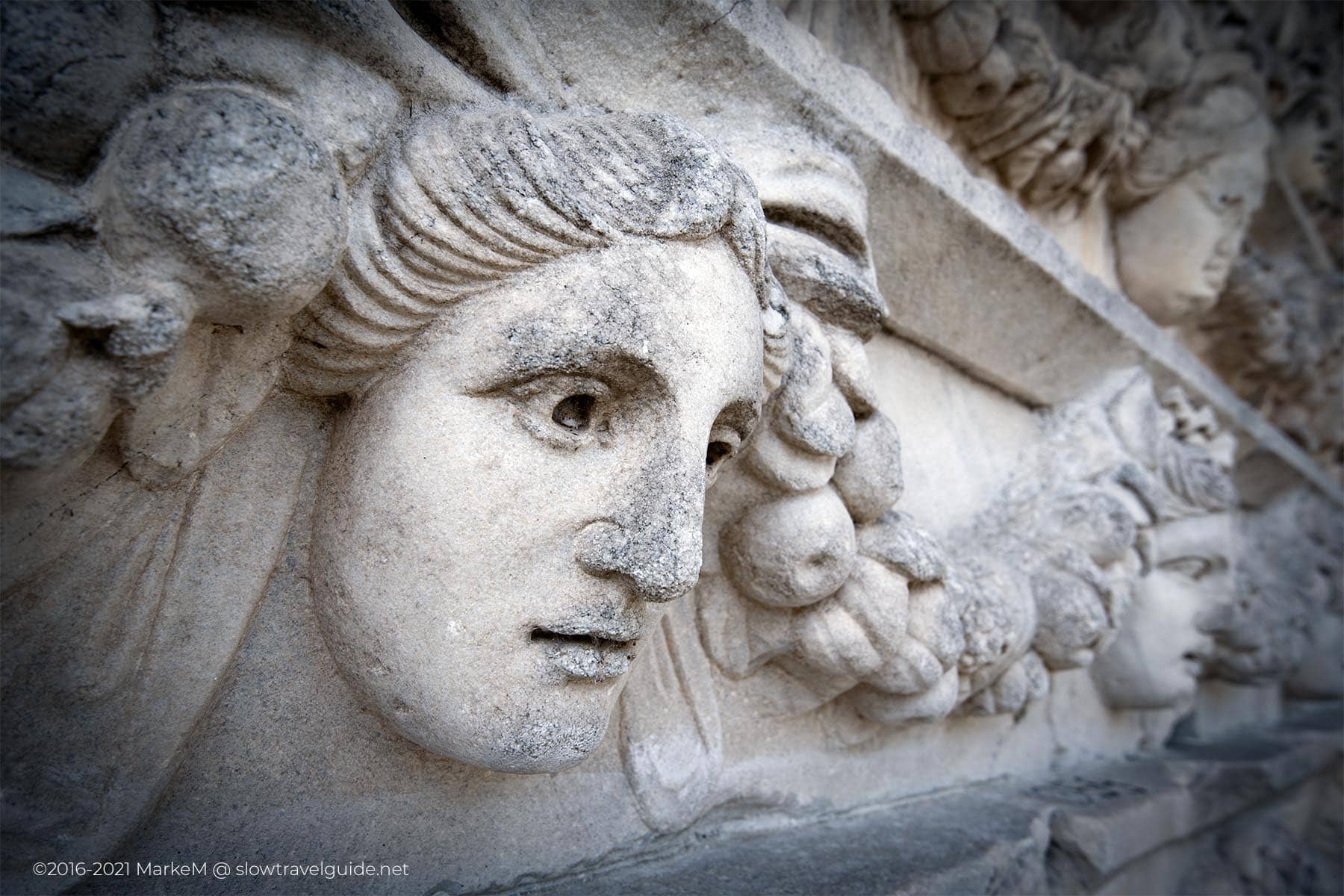
Mask Sculpture At Museum Entrance
There Is More In Between The Landmarks At Aphrodisias
The Surroundings Of Aphrodisias
Practical Information
Aphrodisias is relatively elongated. If you want to get a good impression of this ancient site, please take your time. The site is very well marked and well maintained, the walking trails are in good condition, and all major landmarks have information boards. If you are not accompanied by a guide and you want more in-depth information, please request an audio guide at the entrance.
Check the weather on our page before you visit, for the current weather in the region. Aphrodisias is open 7 days a week, from 8.30 hrs to 17.30 hrs (Check before you visit). During the off-season, the museum closes at 5 pm.
An Ancient Hunter At Work
We introduced the most important landmarks in Aphrodisias today. Be sure to go beyond these. Turkish Aphrodisias is a lovely place in a natural environment. In autumn, the ancient site becomes extra attractive at golden hour.
A Wide Variety Of Artefacts Around The Museum
Are you considering visiting more than Aphrodisias in Turkey? The ancient site is not far from Pamukkale and Hierapolis, or it is a perfect stop on your way from Ephesus to Antalya.
If you have any questions about a place, feel free to ask. You can send us a message through our contact page or leave a comment on our Instagram or Facebook pages.
You can also join our group Turkey Travel Photography on Facebook to share your lovely photos or experiences about Turkey.
Places Nearby
Arpaz Evler Mansion&Castle, spectacular Ottoman Mansion (35km)
Laodicea, the last church of revelation (36 km)
Tabae, also known as the fortress of Tavas (33km)
Karacasu, pottery making tradition (11 km)
Places We Recommend
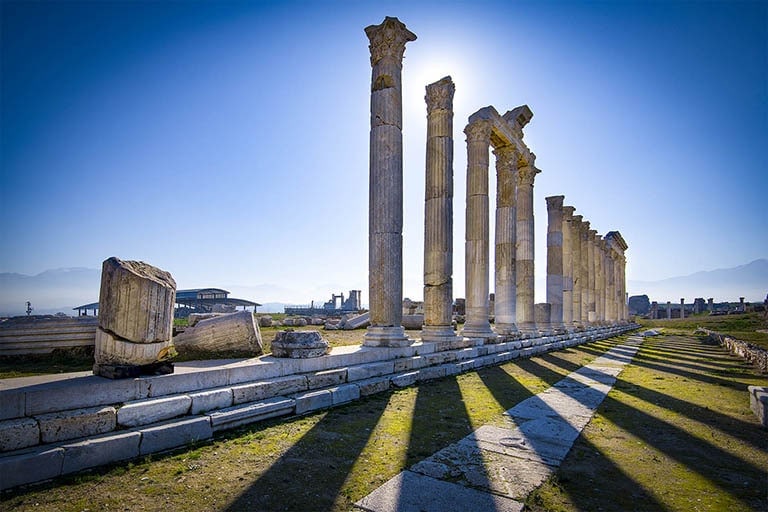
Laodicea
Laodicea is a fascinating ancient site. It lacks charm, but it makes up for that in scale, and thought-provoking reconstruction works. After all, this is an important ancient city that was reduced to ruins after a series of devastating earthquakes. (Read more)
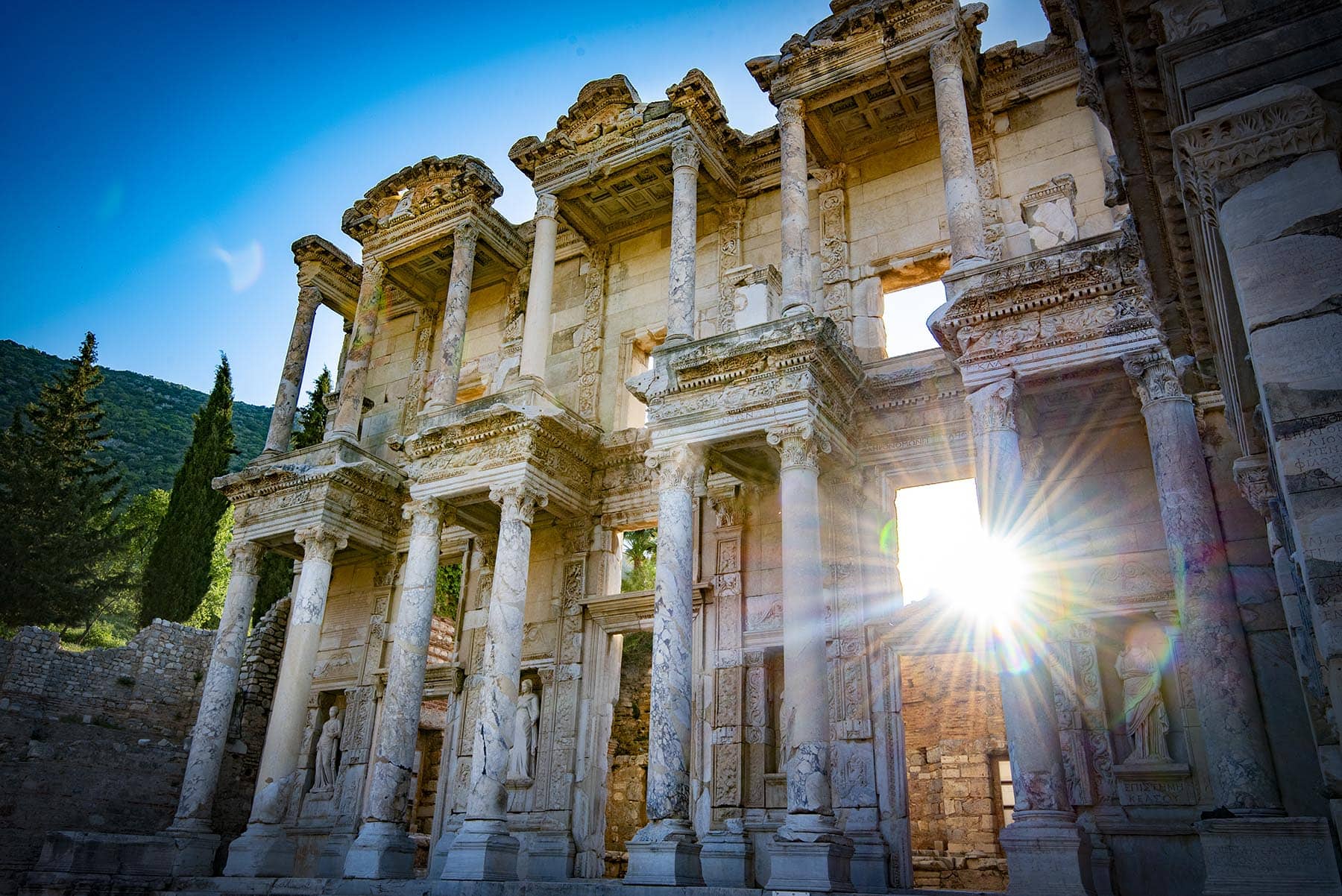
Ephesus
Ephesus (or Efes) is part of the famous Turkey Triangle Tour, which also takes you to other cultural attractions, such as Istanbul, Cappadocia and Pamukkale. It was once the capital of Roman Asia Minor, and its current status is the most comprehensive classical metropolis in Turkey and Europe. (Coming soon)
© 2016-2022 All rights reserved by slowtravelguide.net.
The content of this website is copyright protected and the property of slowtravelguide.net.No part of this website may be reproduced in whole or in part in any manner without the written permission of the copyright owner.
Copyright ©2016-2022 Tüm hakları saklıdır. Bu (slowtravelguide.net.) web sitesinin içeriği koruma altındadır ve slowtravelguide.net.Buradaki hiçbir içerik (yazı,fotoğraf,video vb.) izinsiz olarak kopyalanamaz, alıntı yapılamaz,başka yerde yayınlanamaz.

